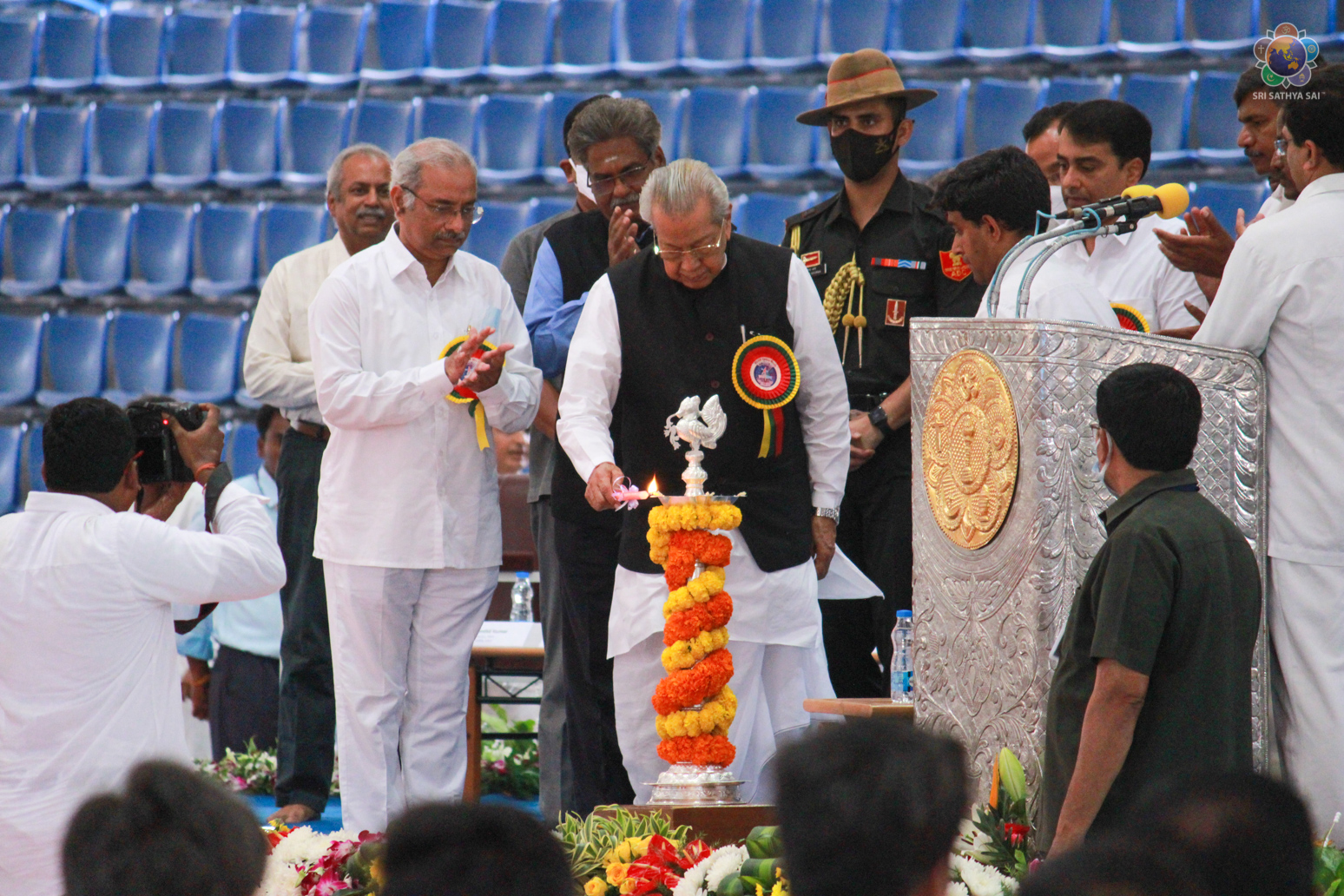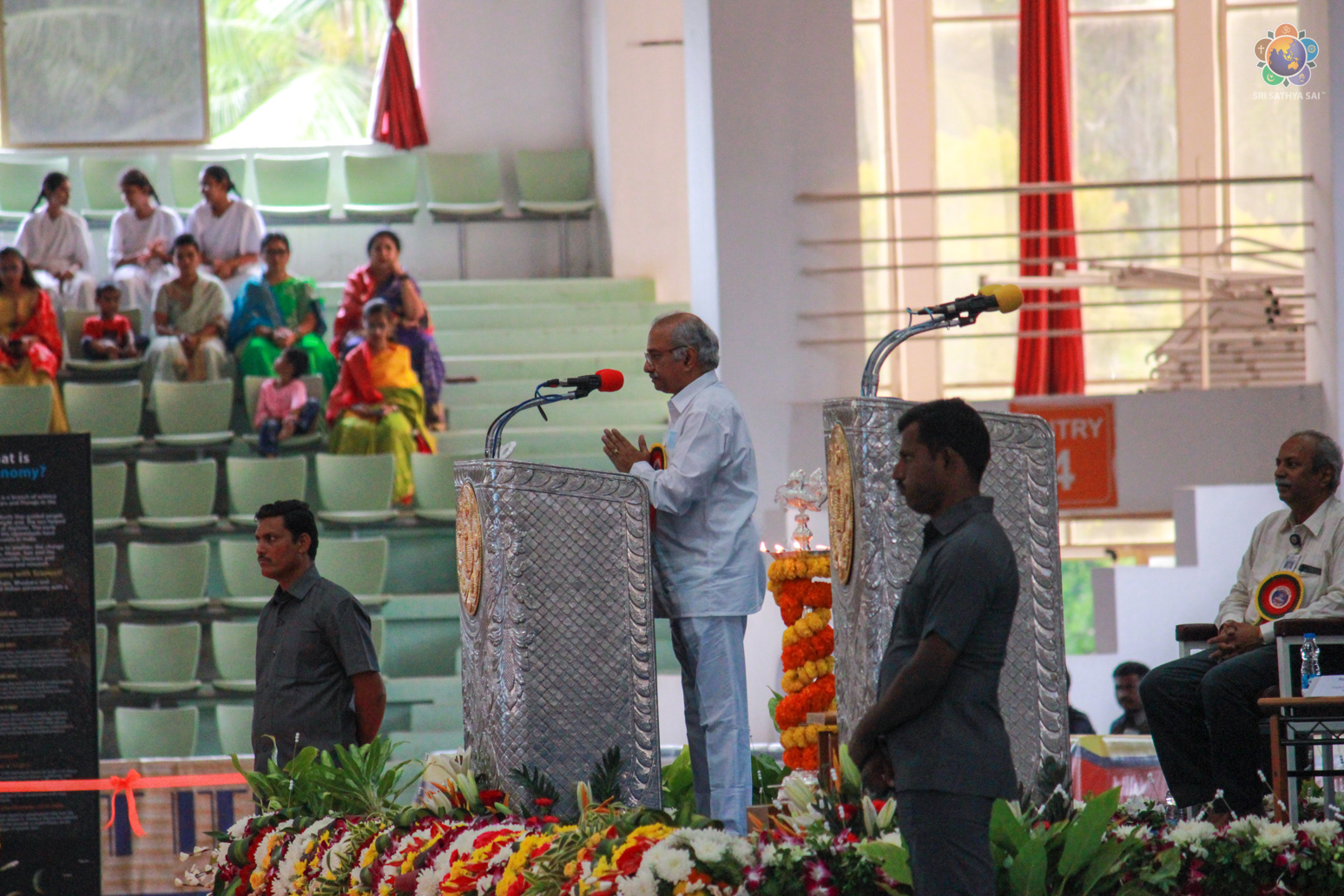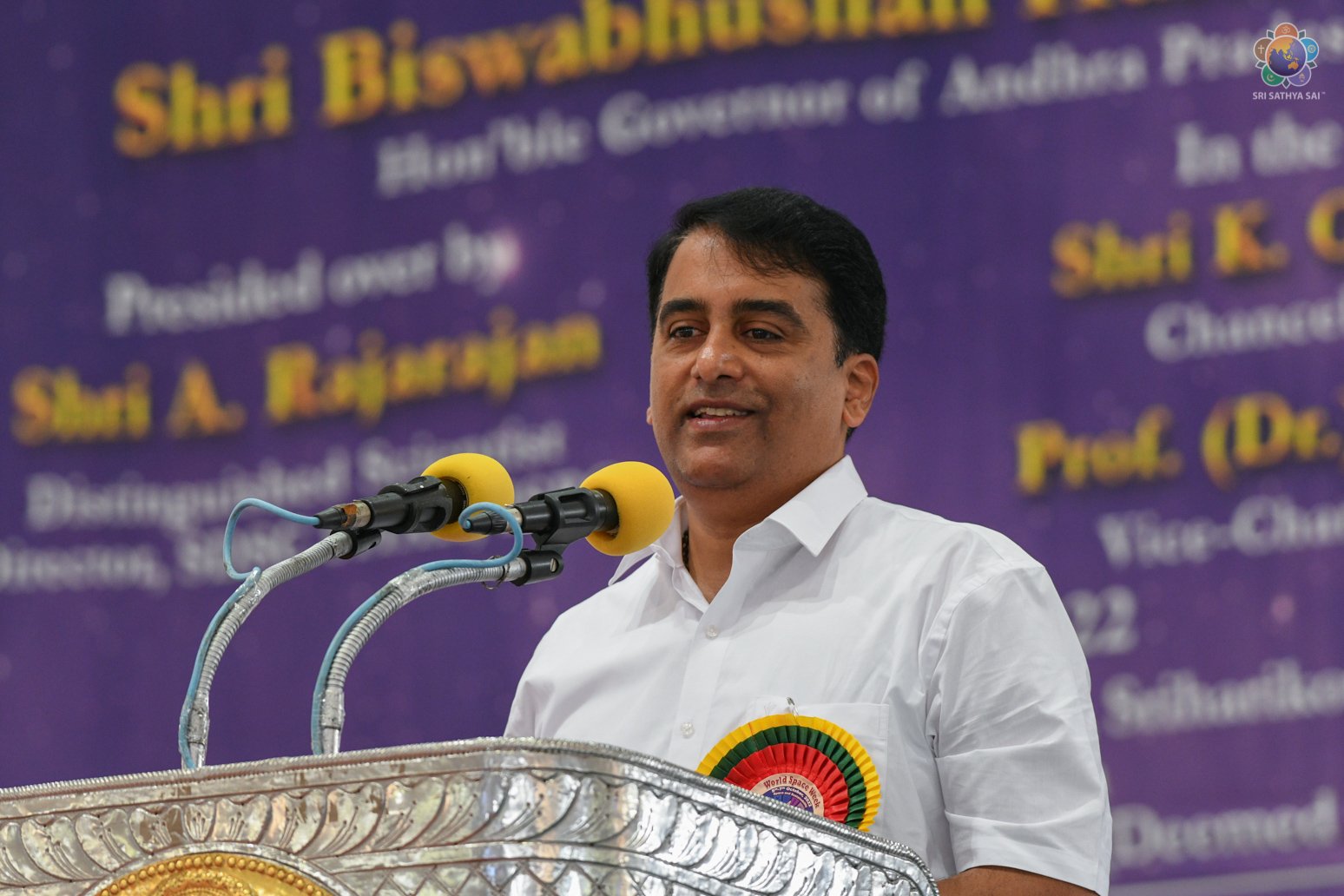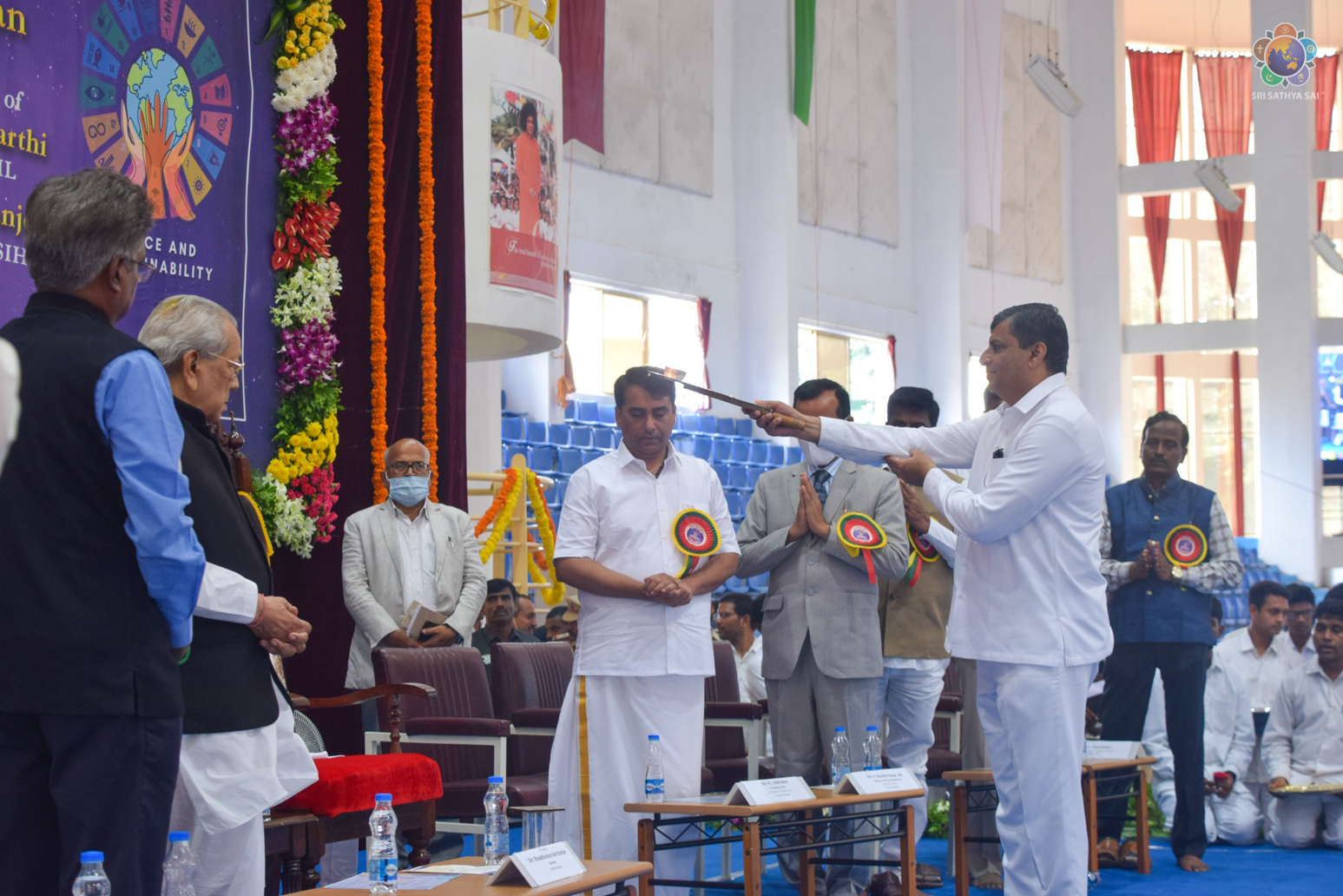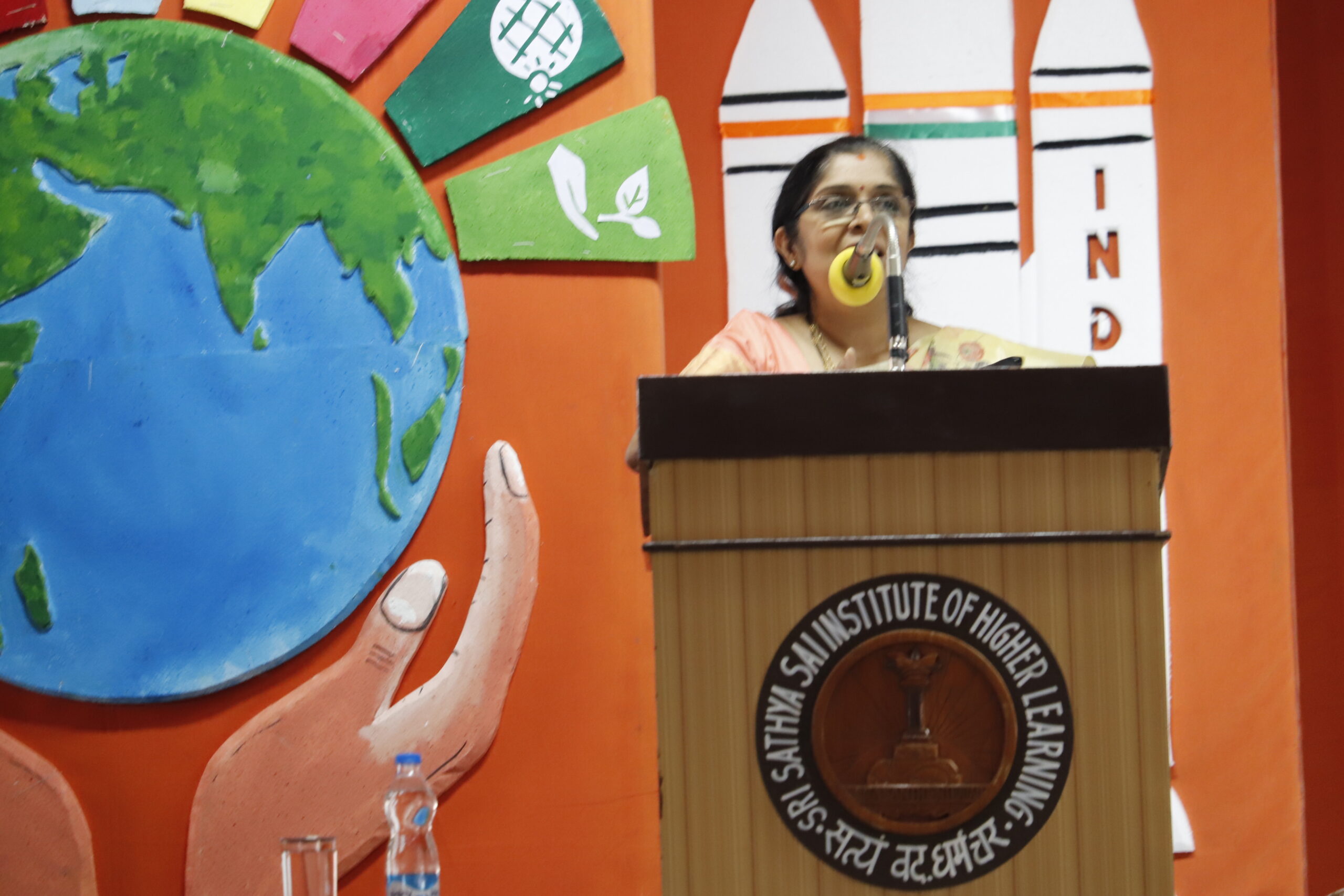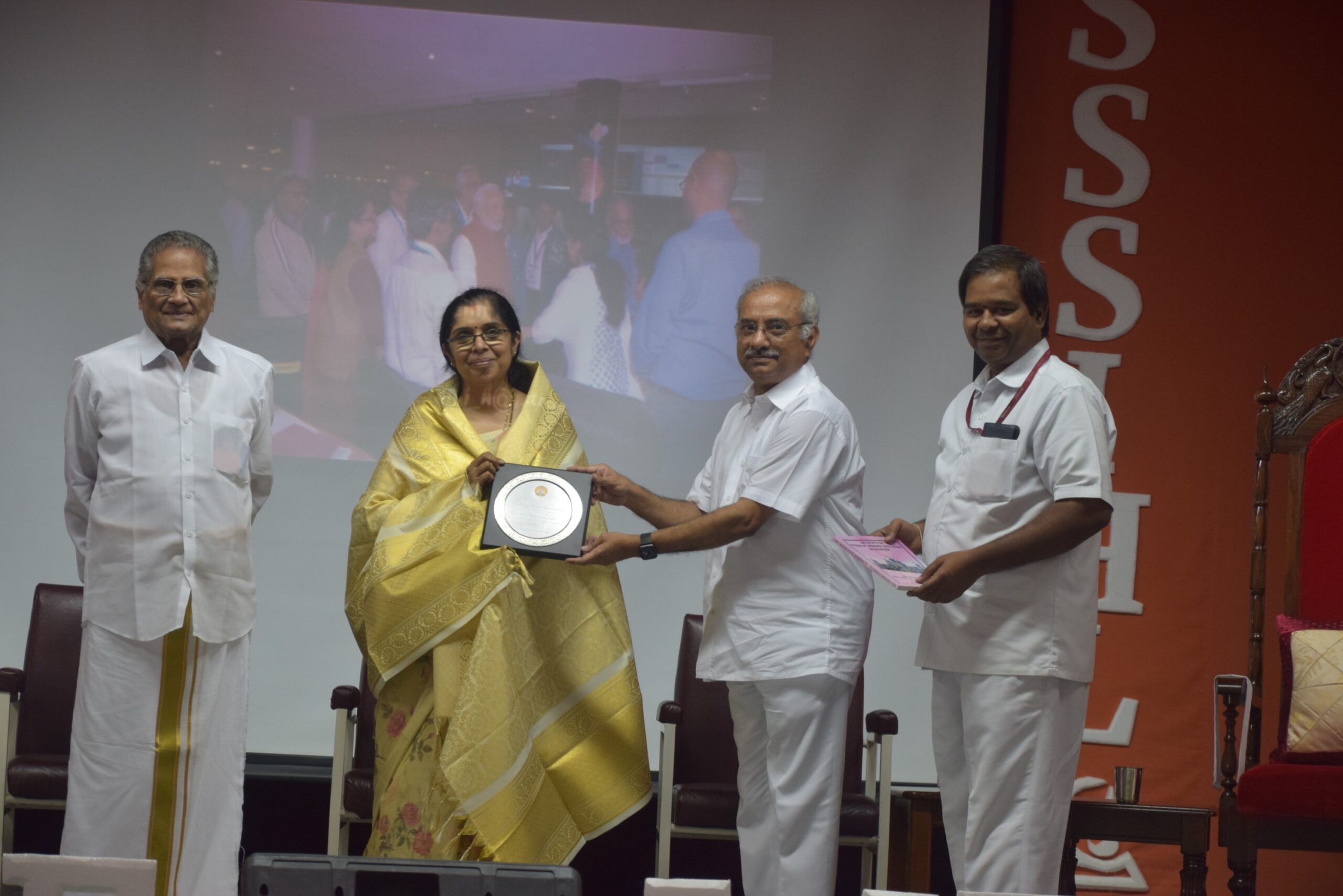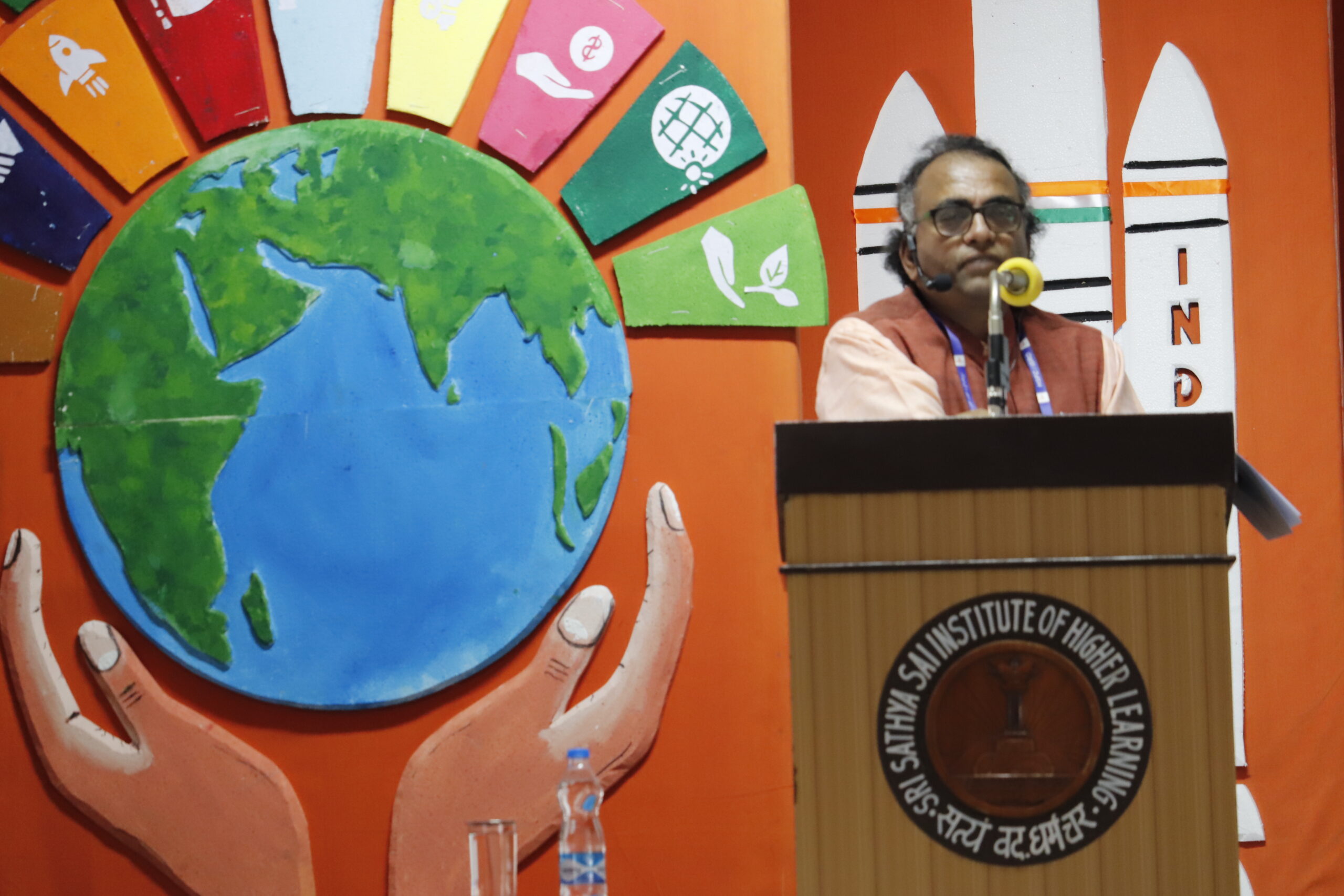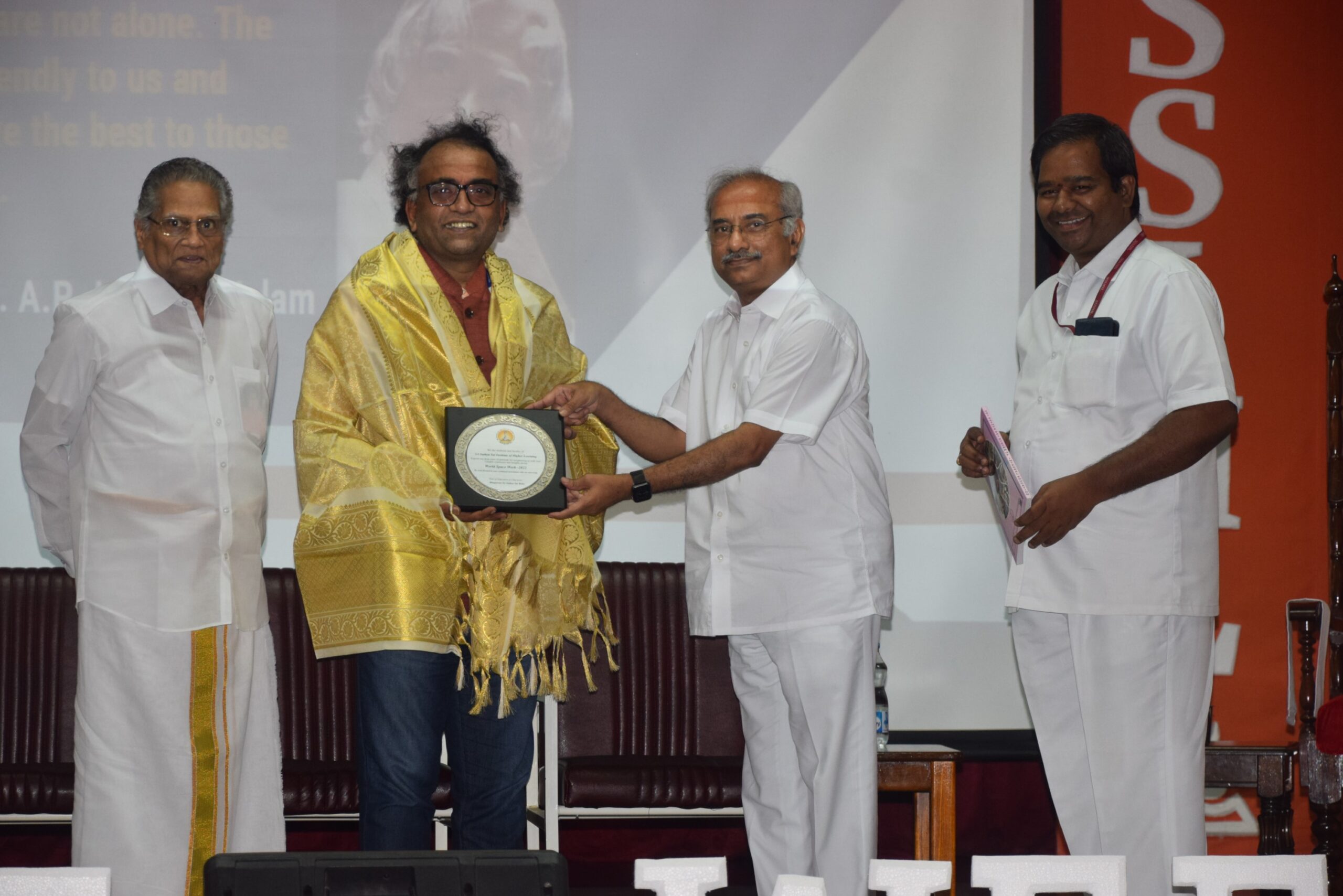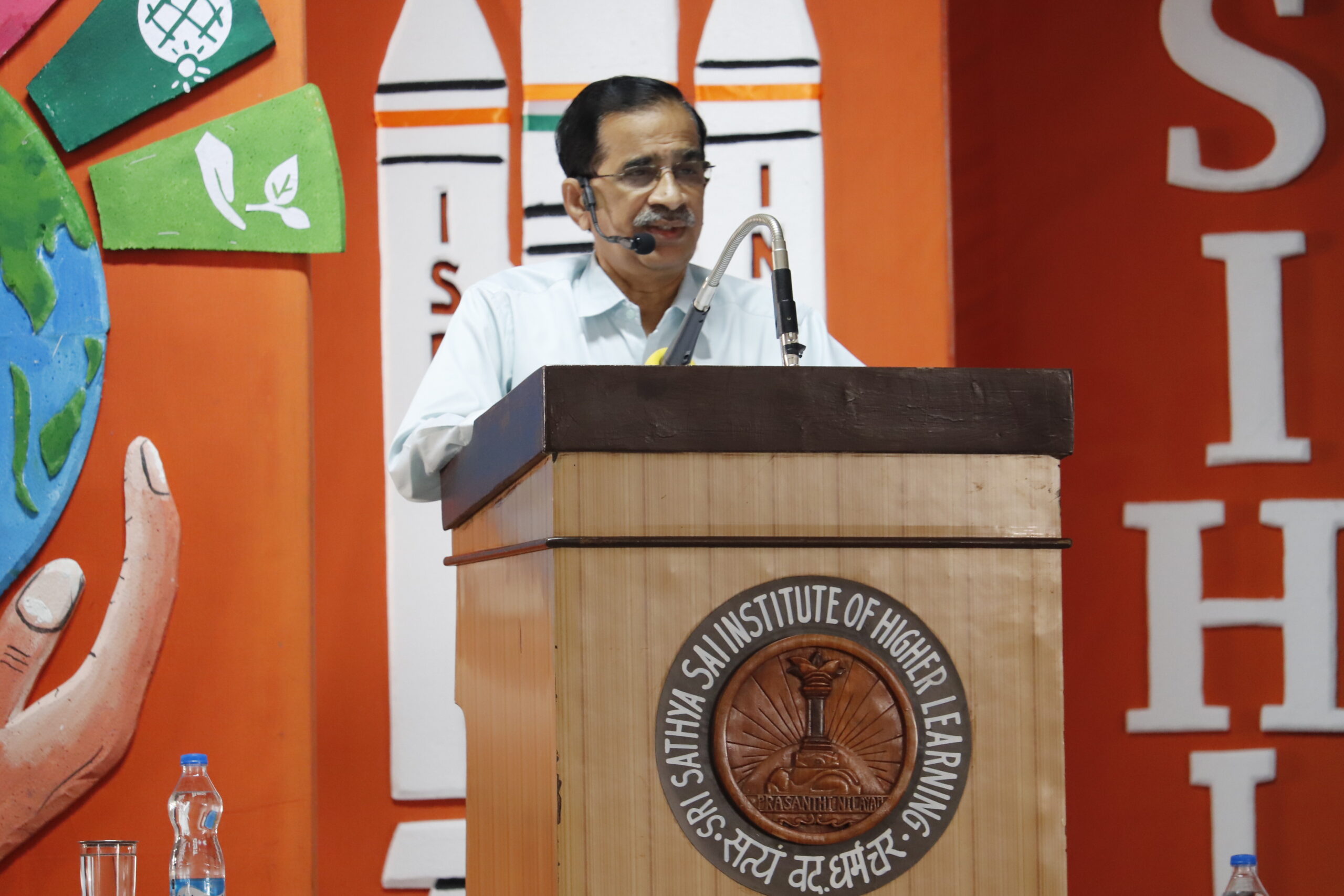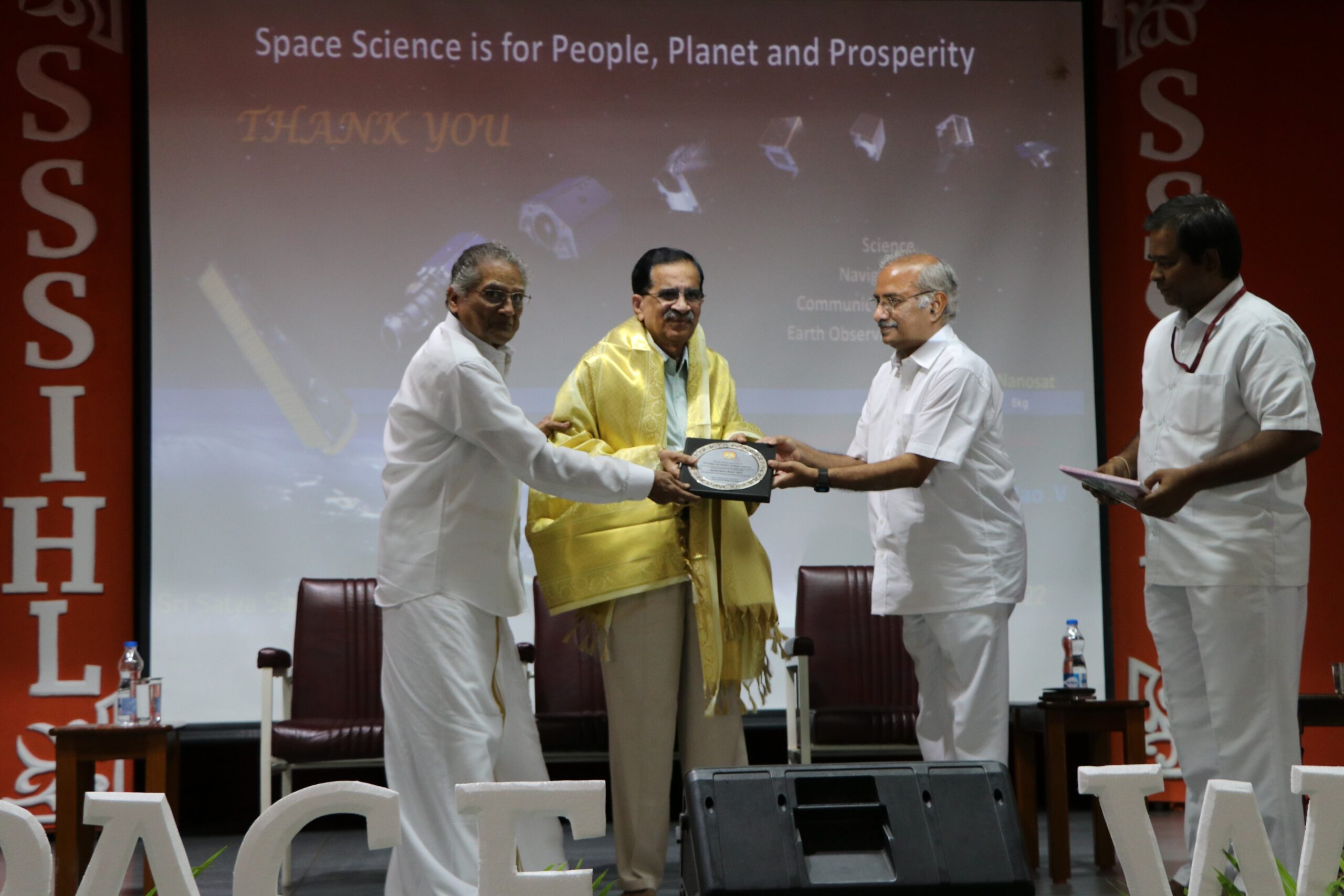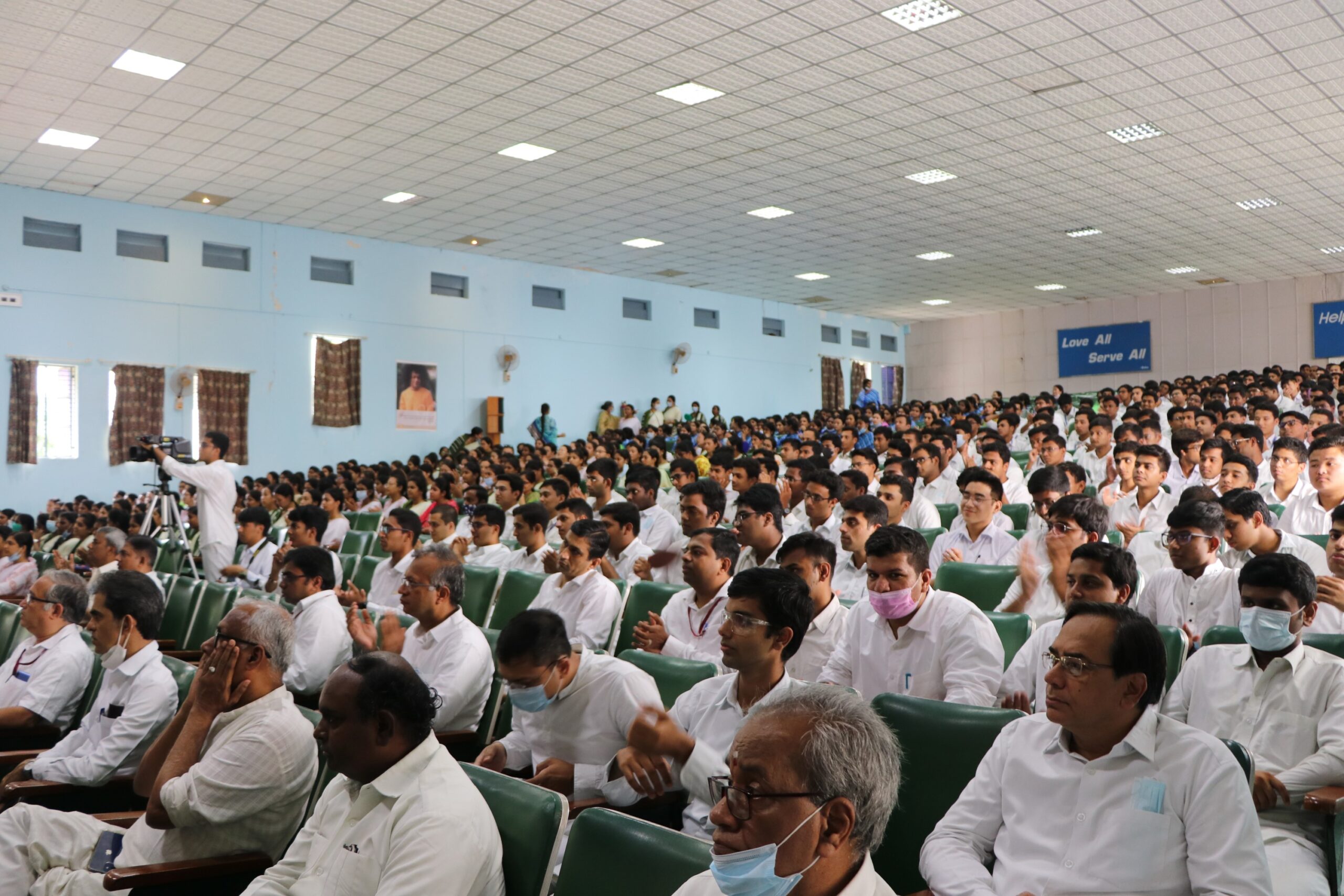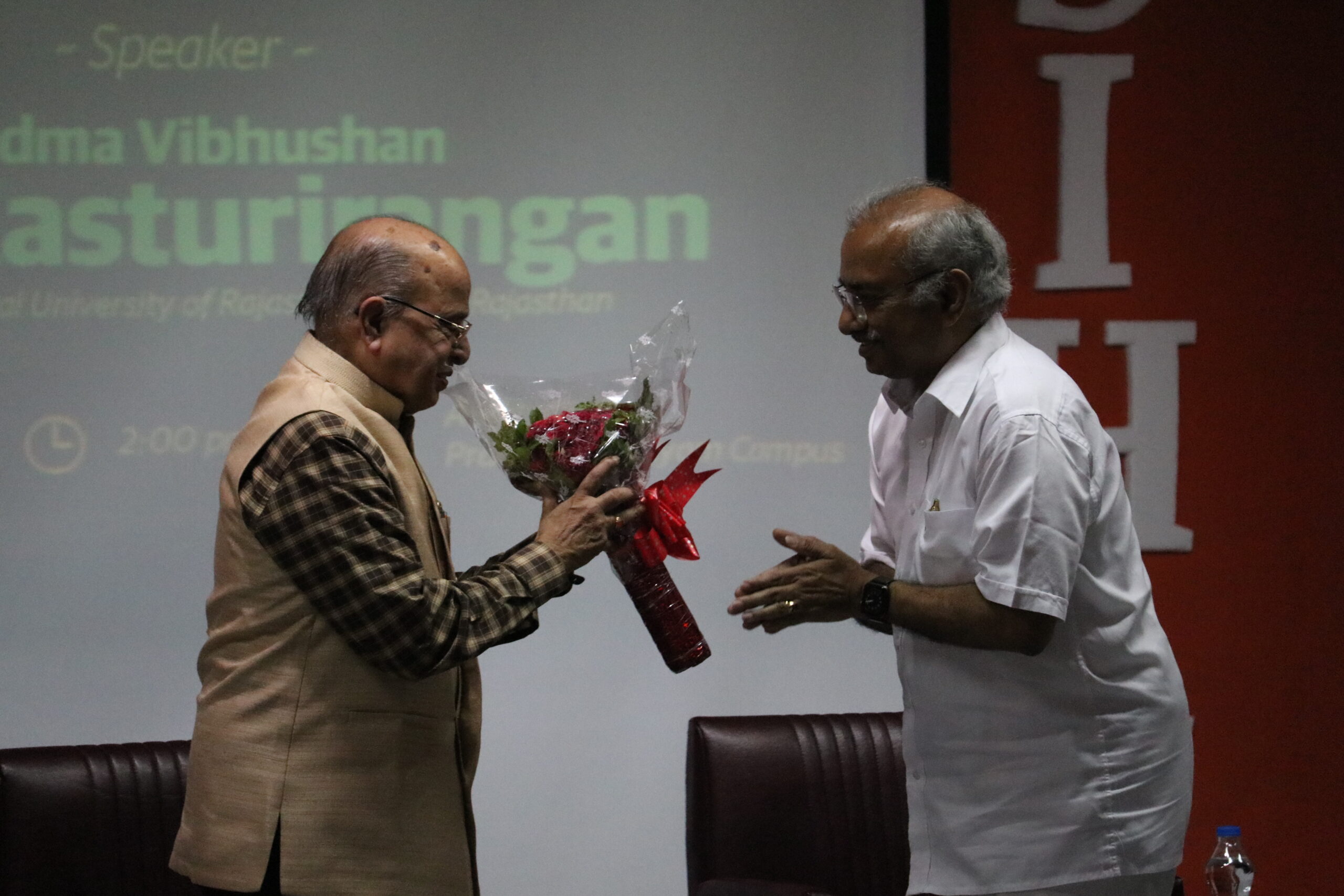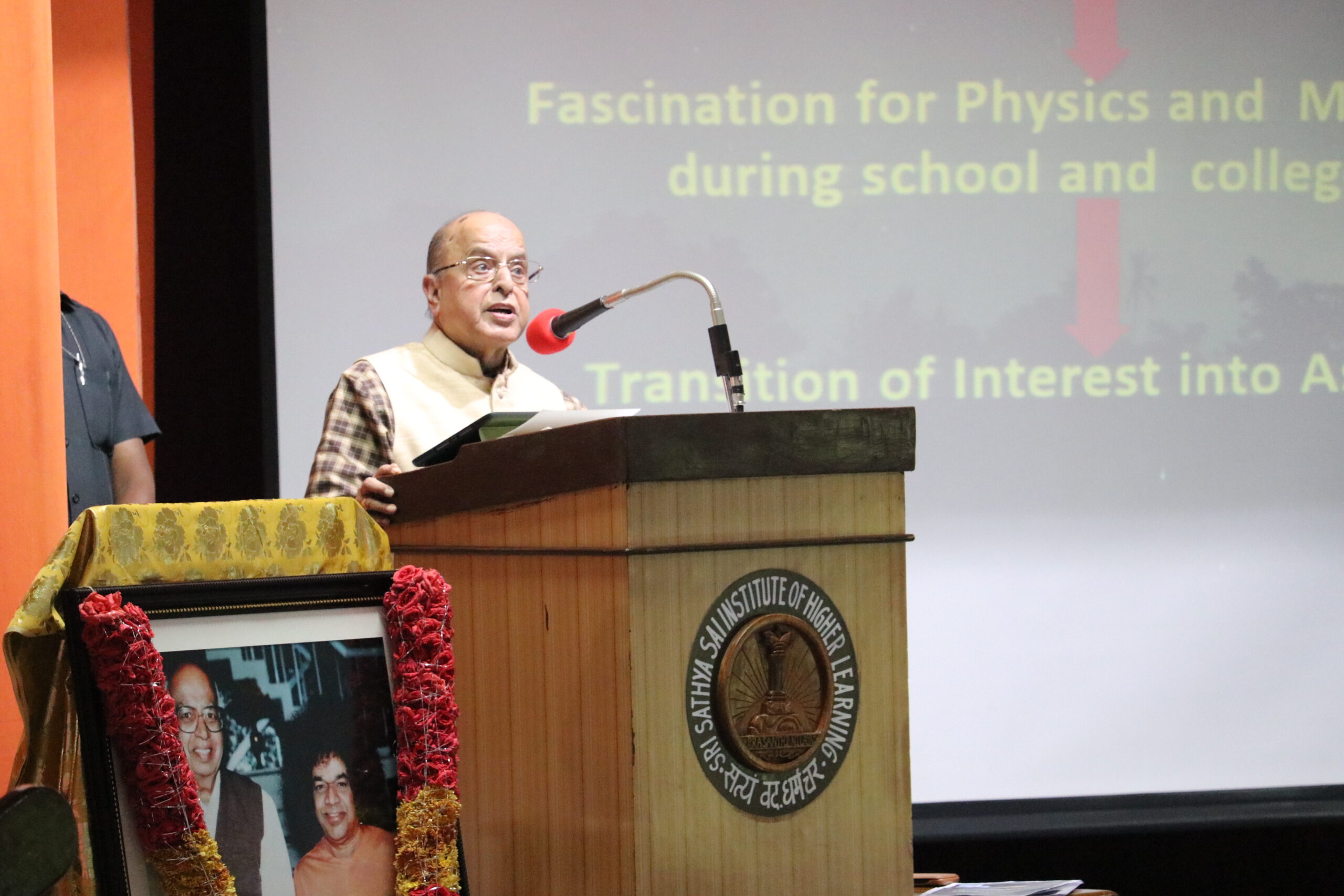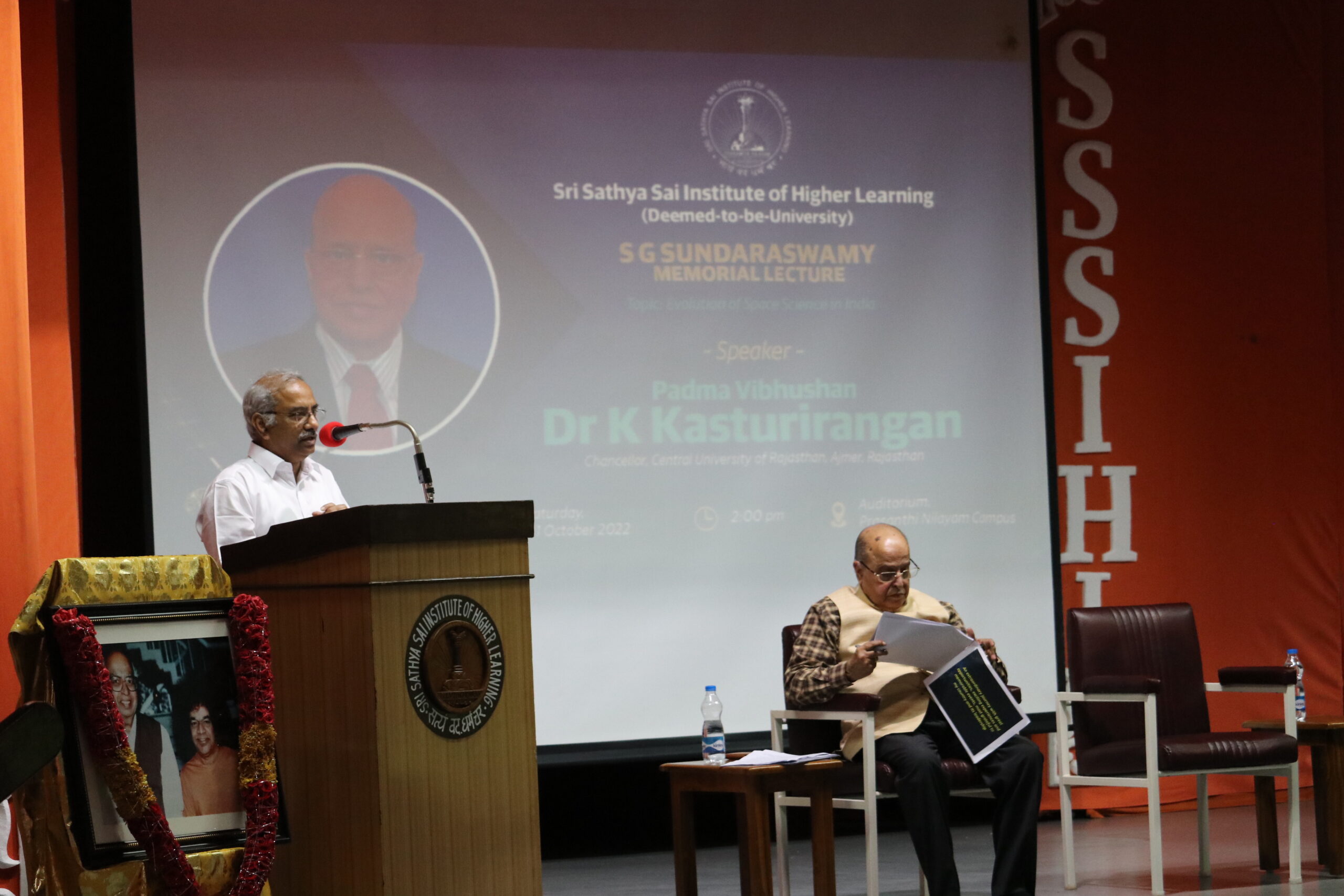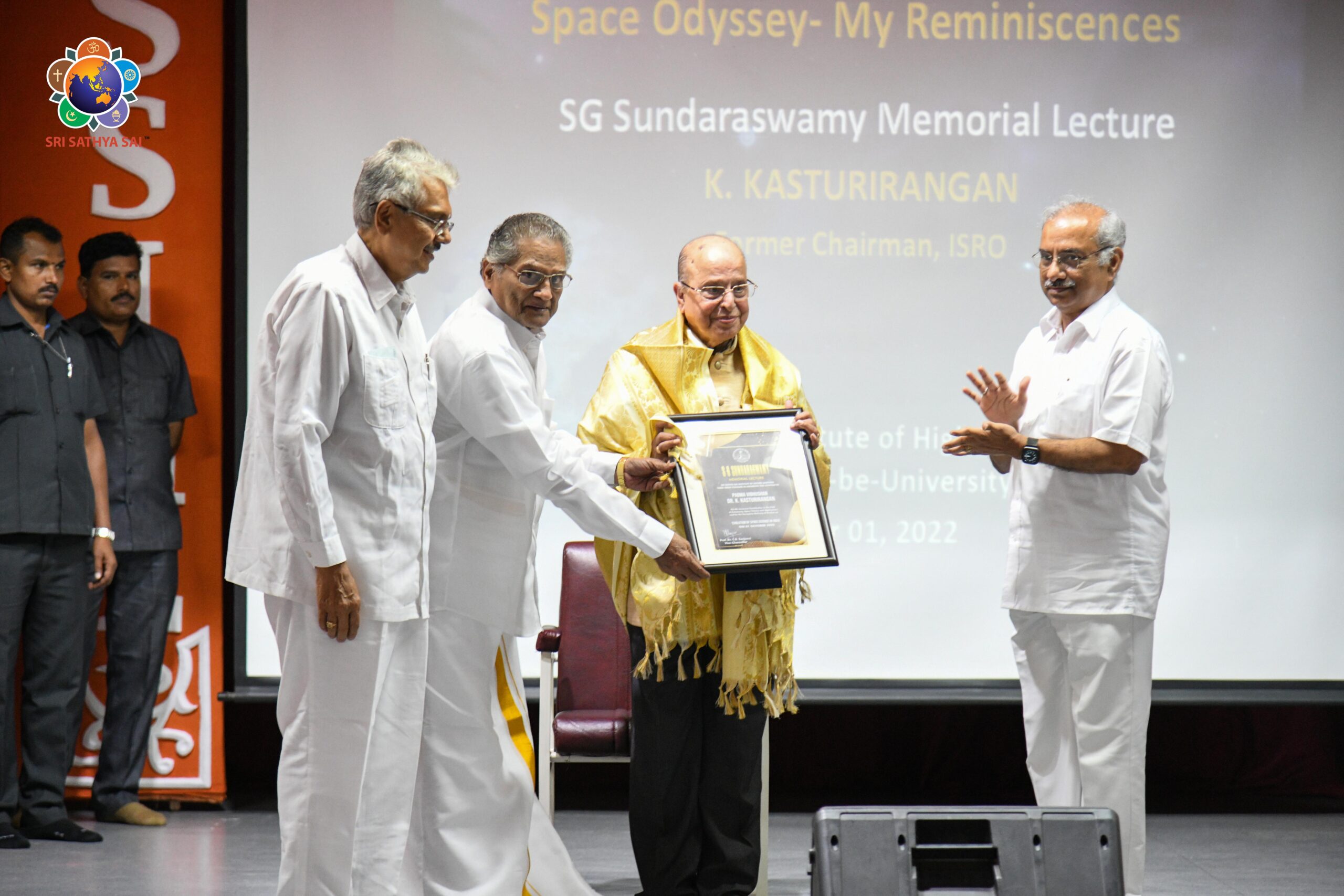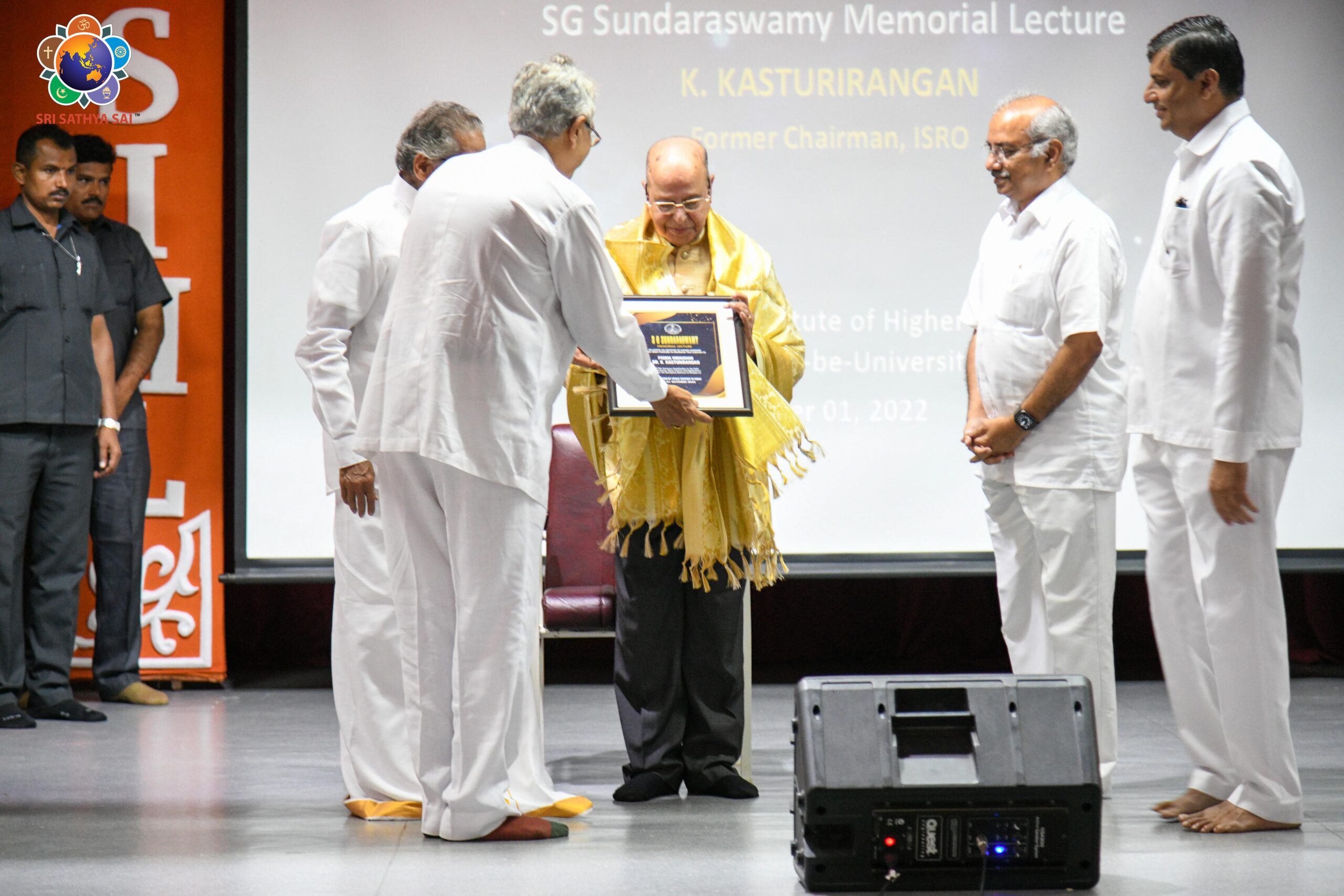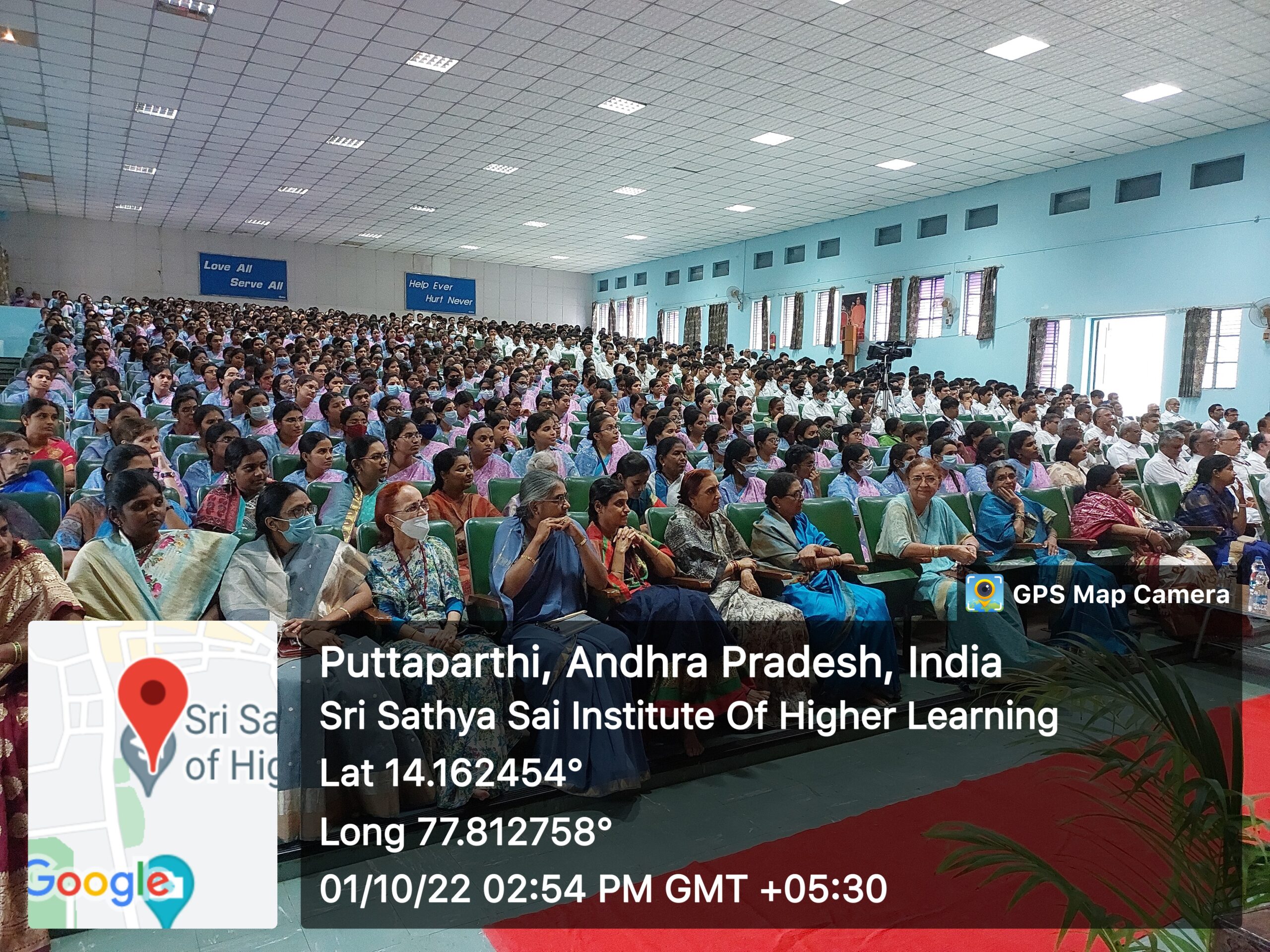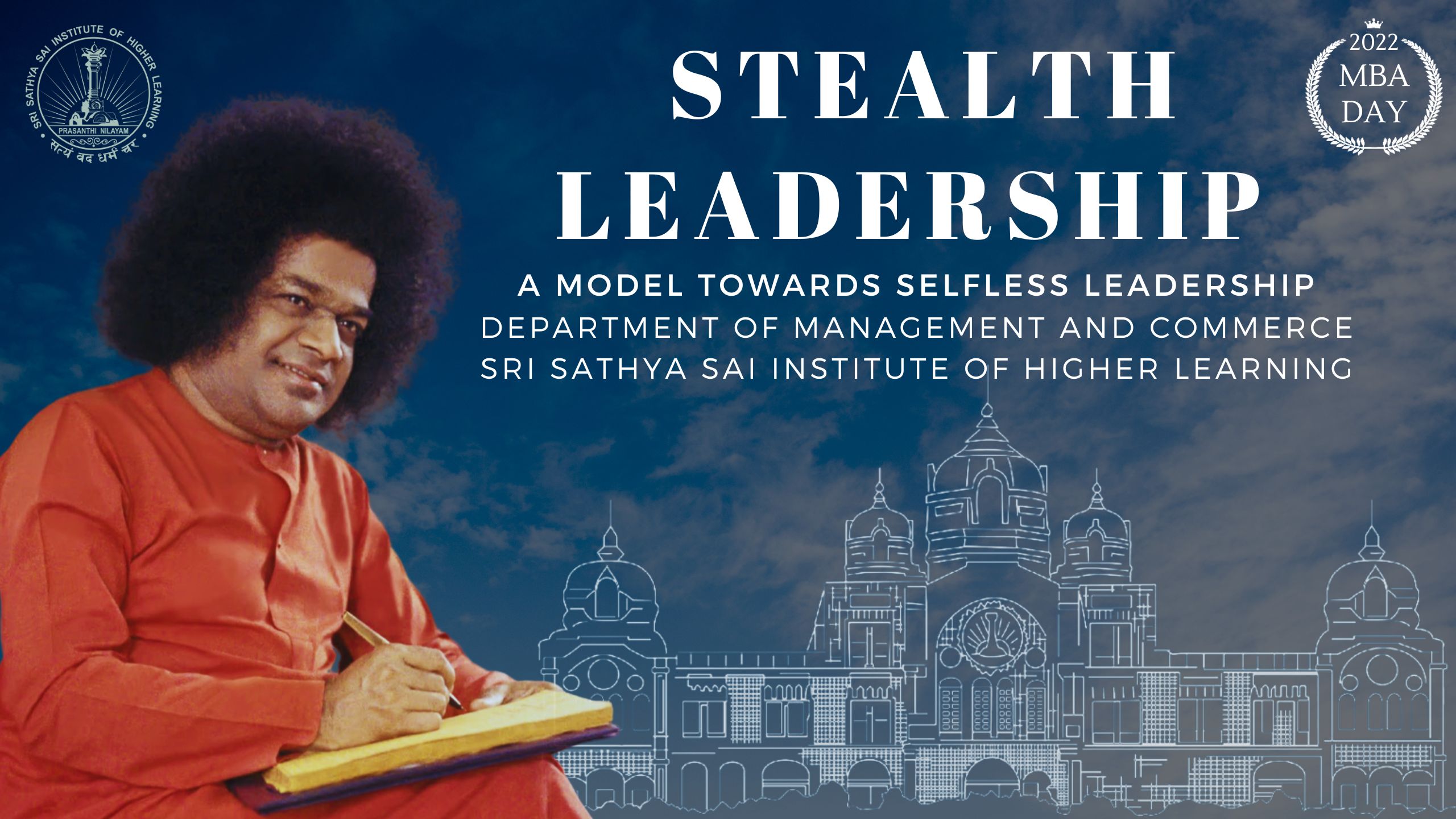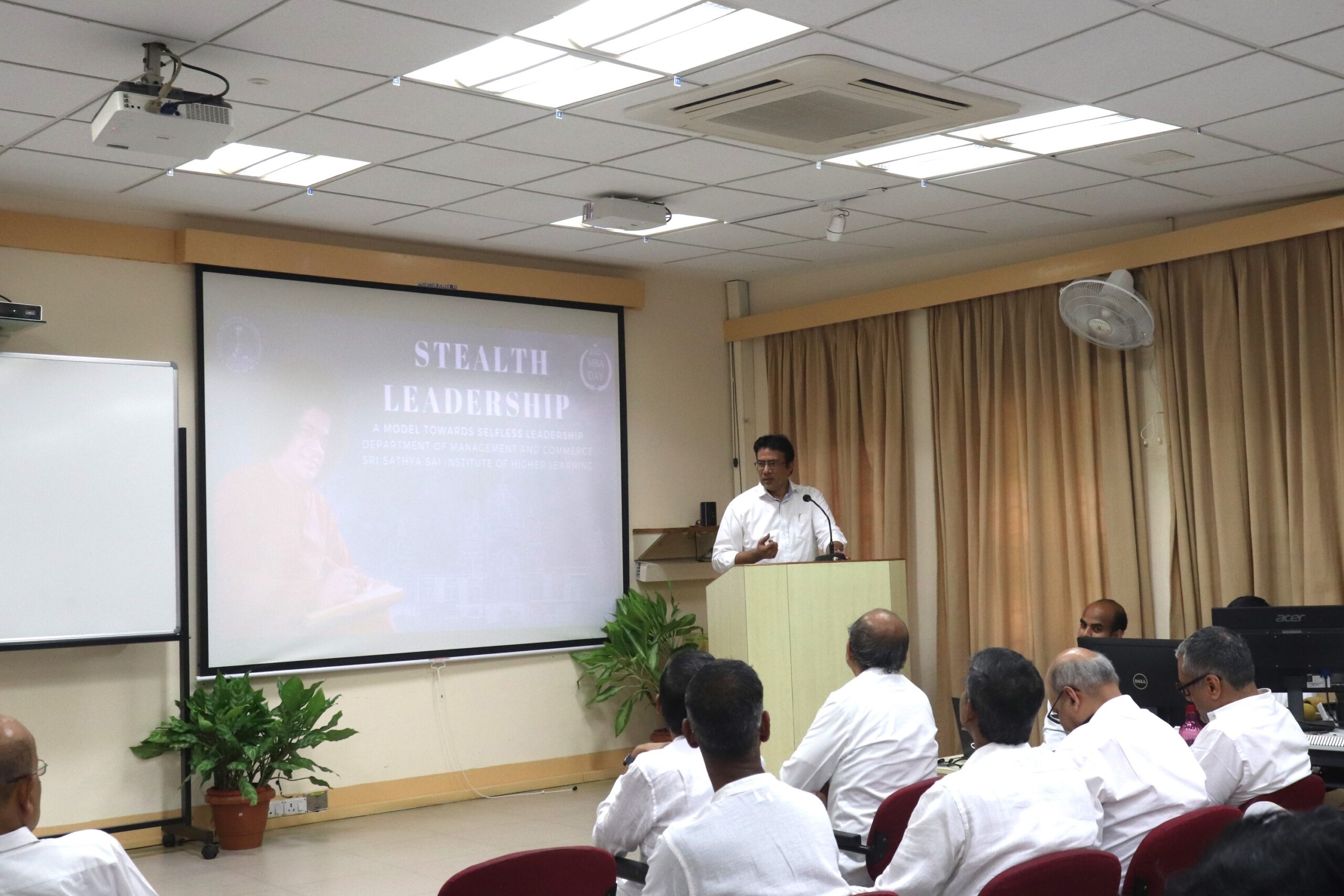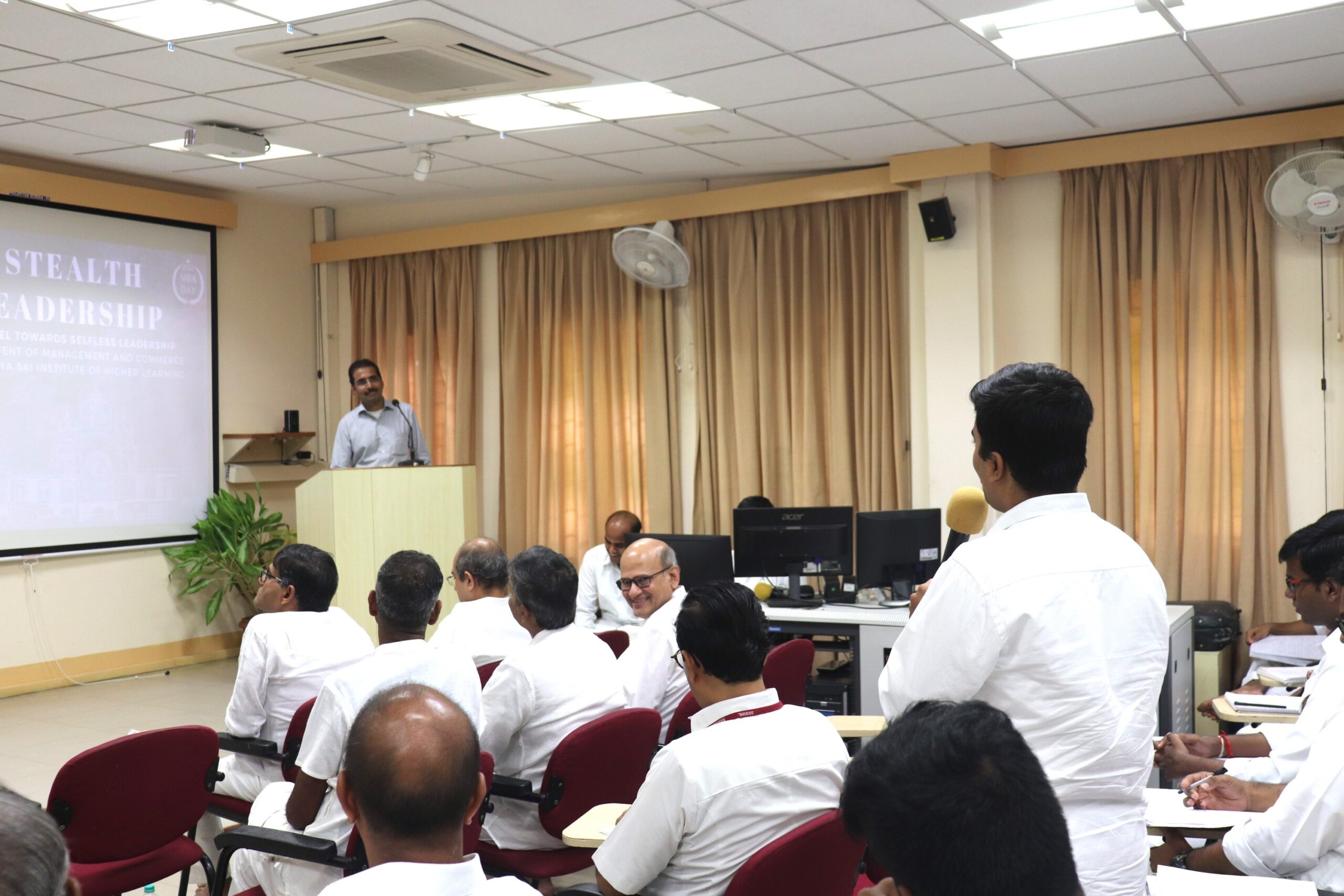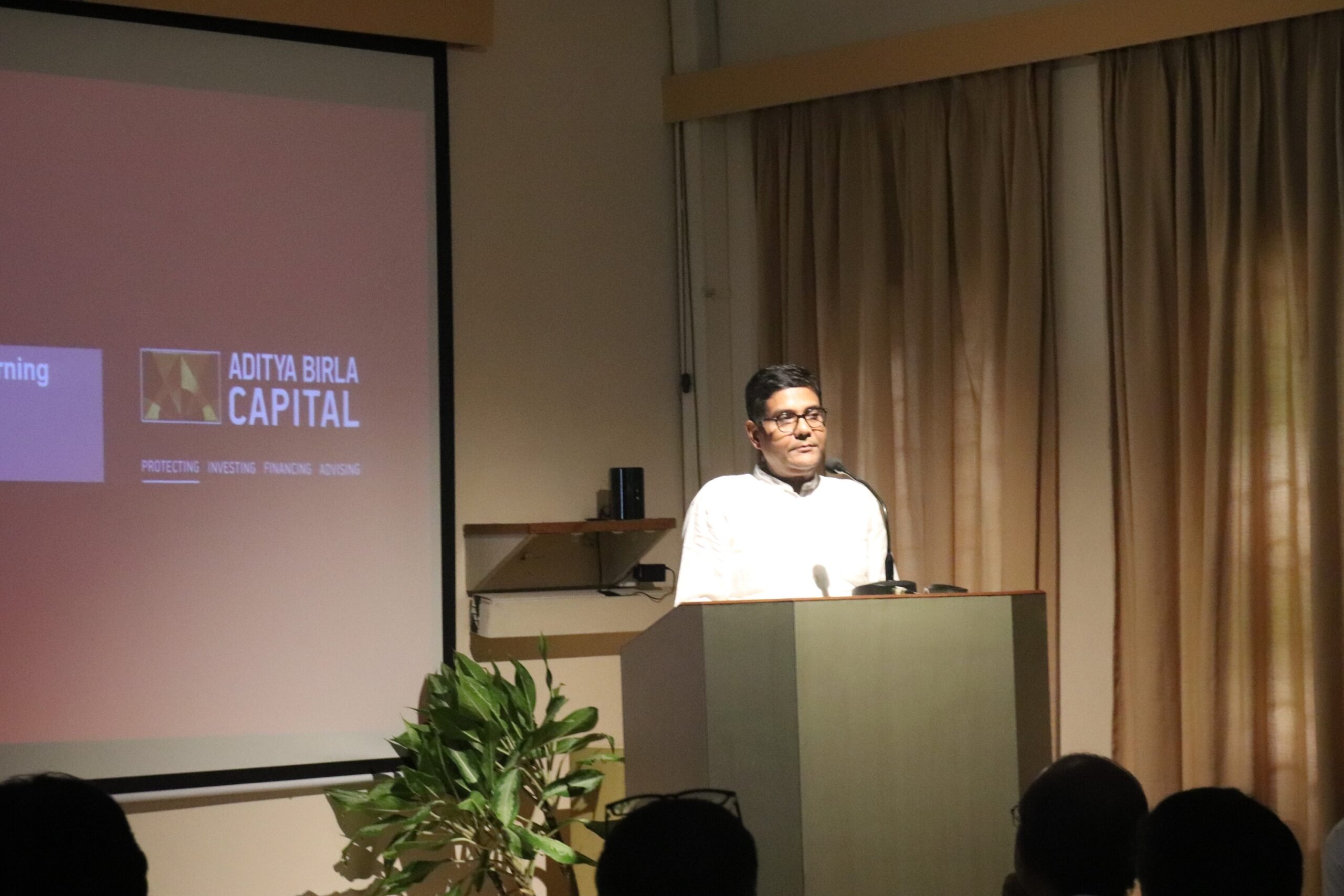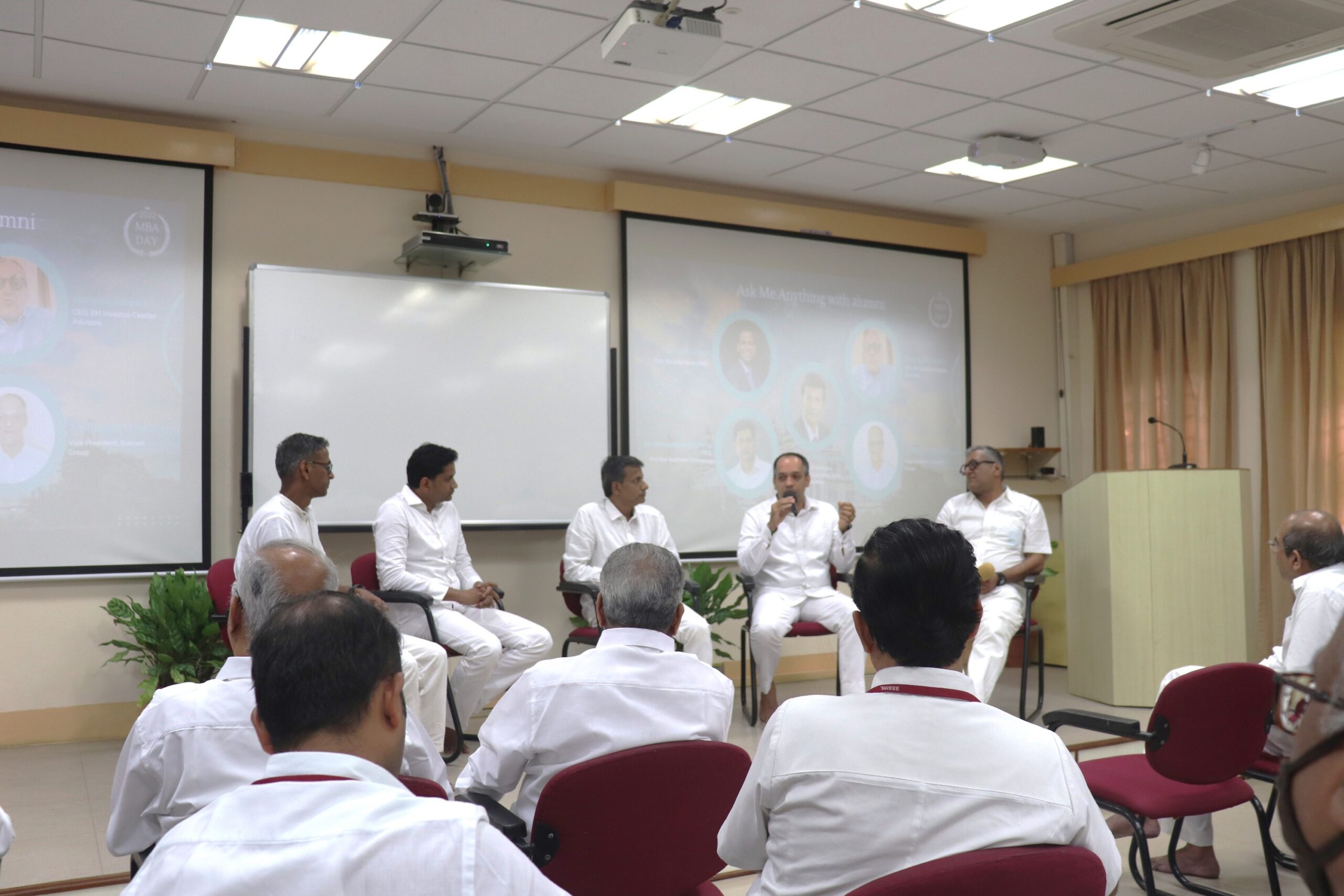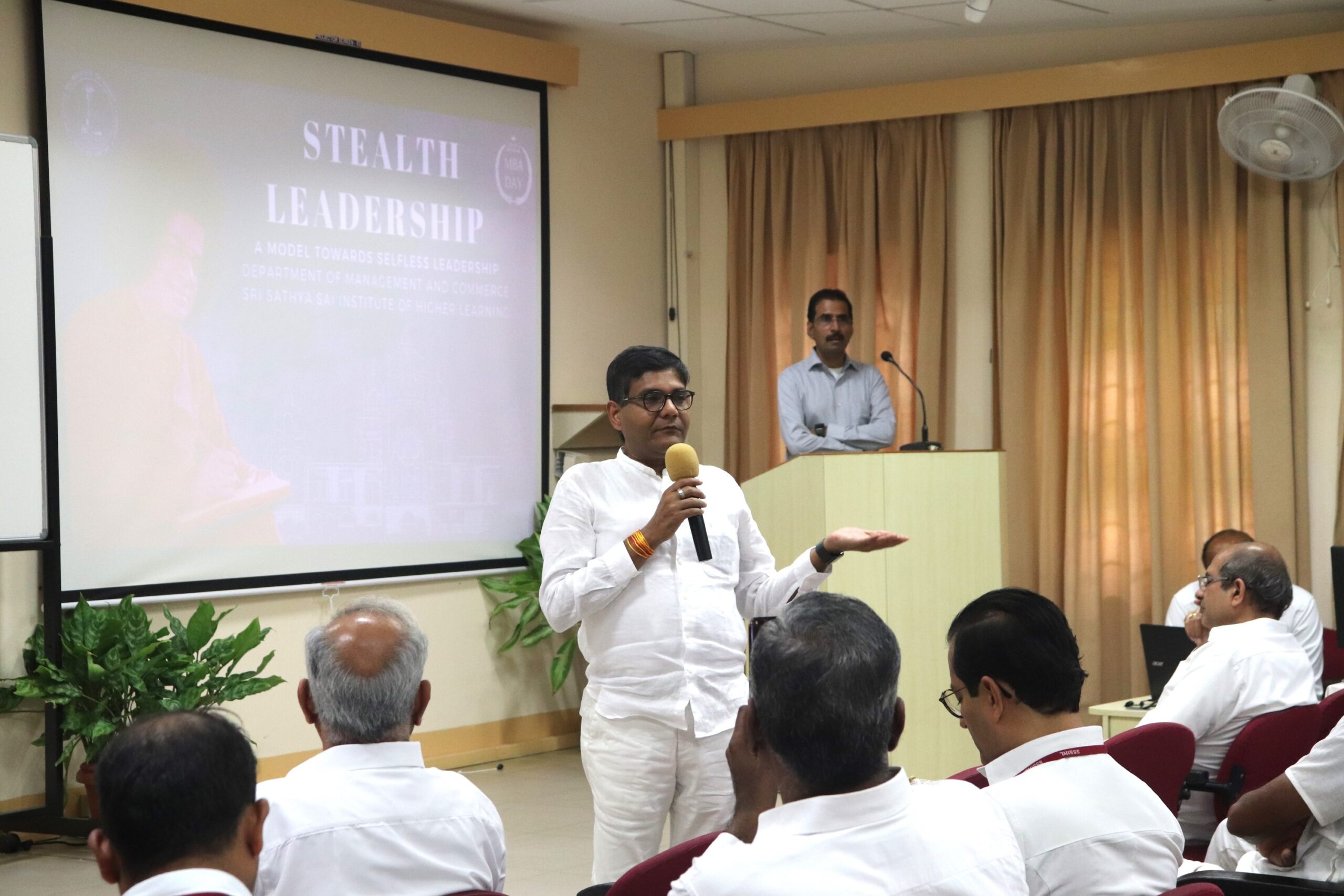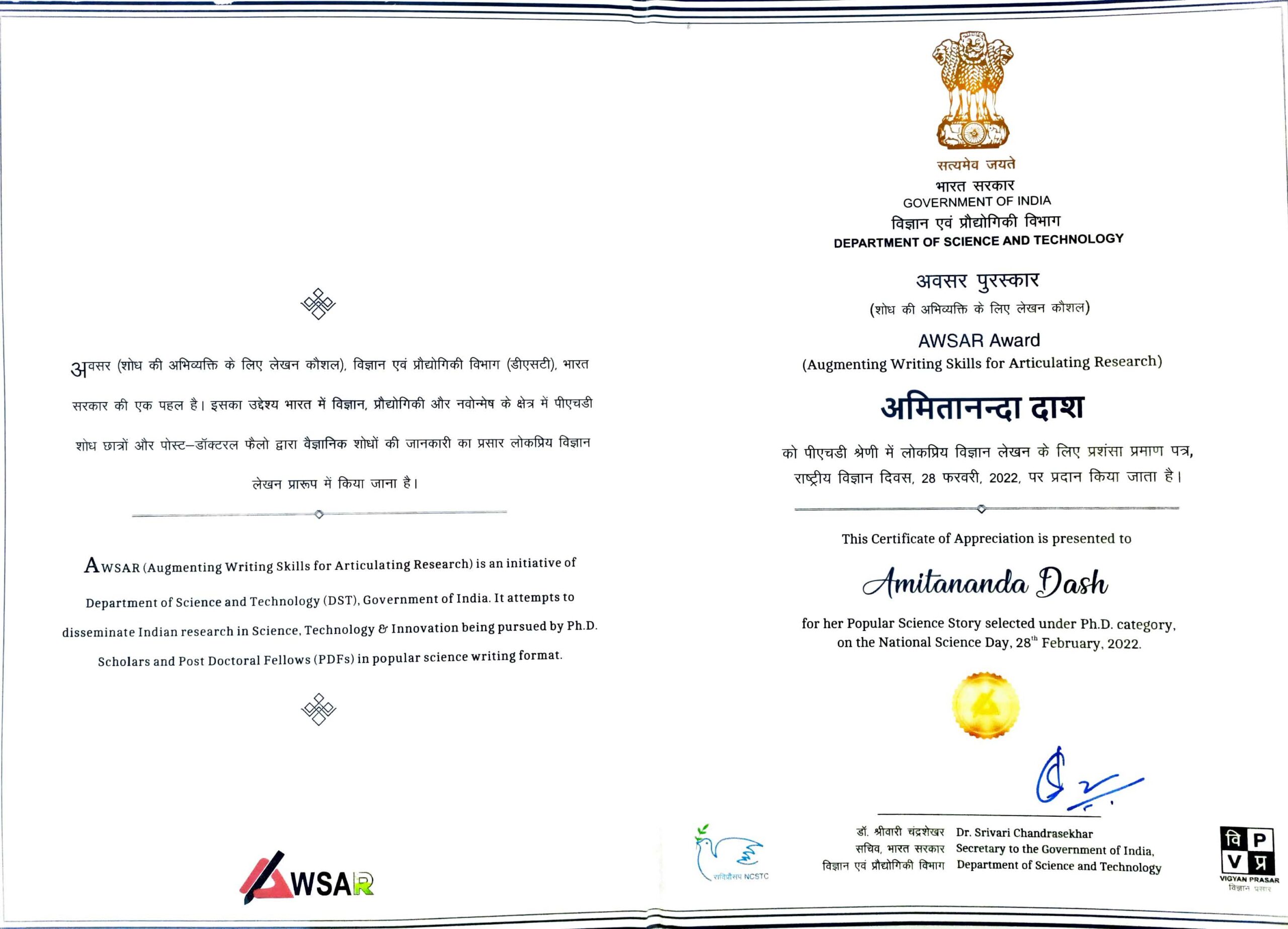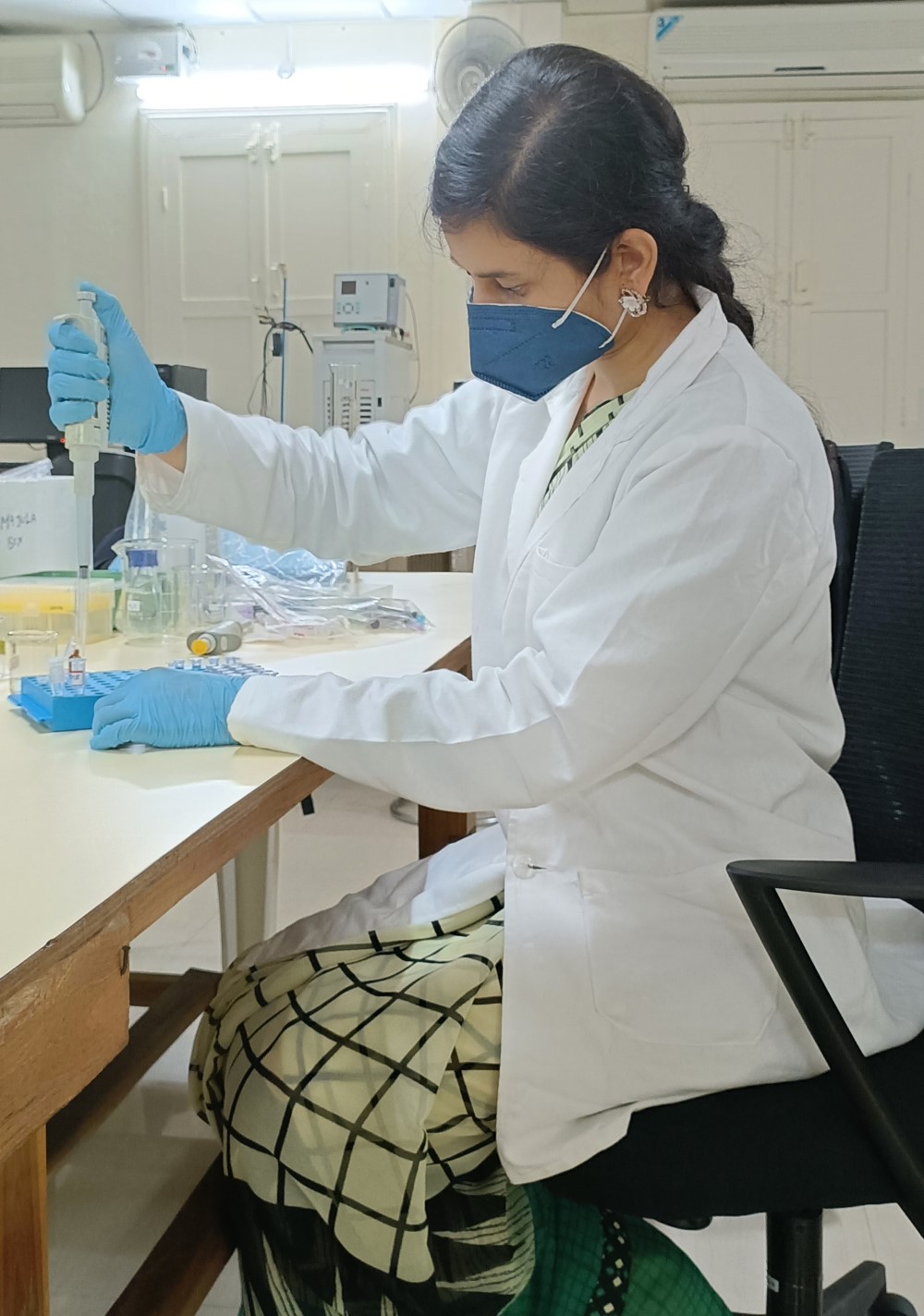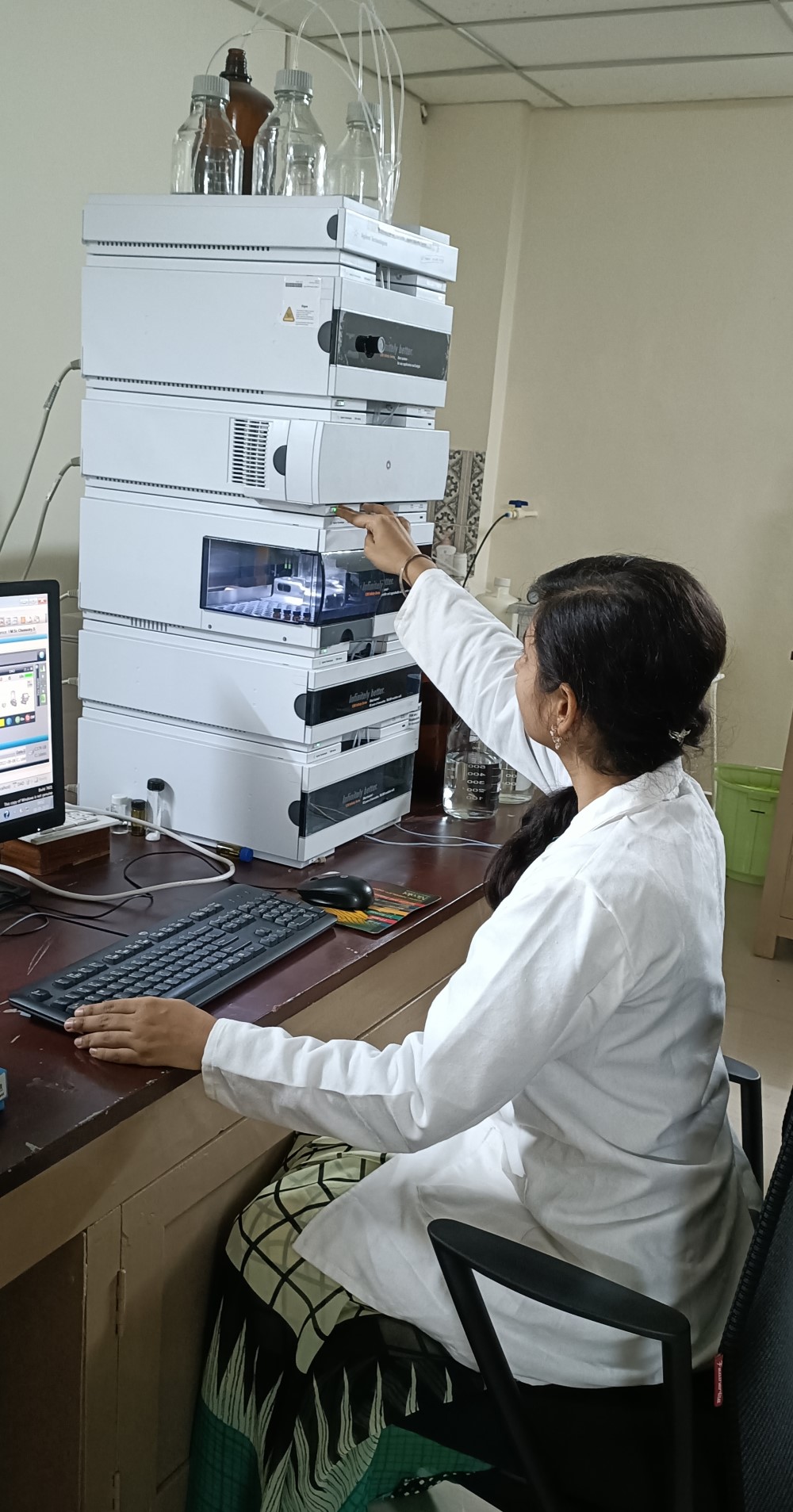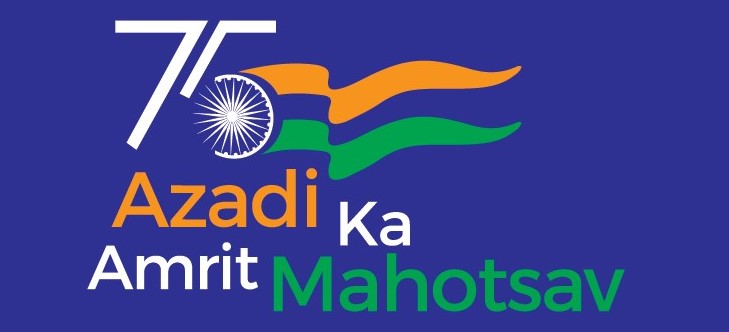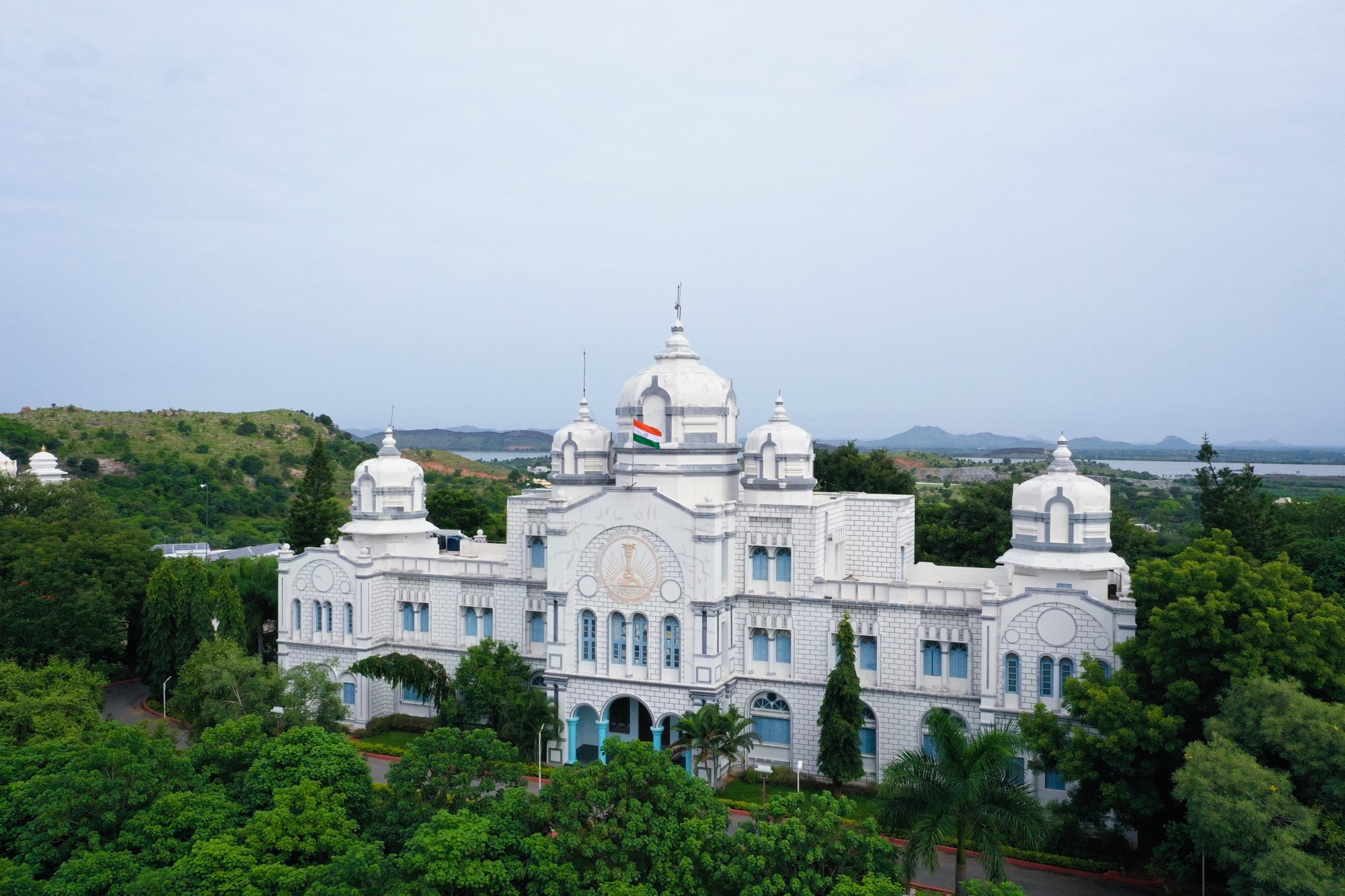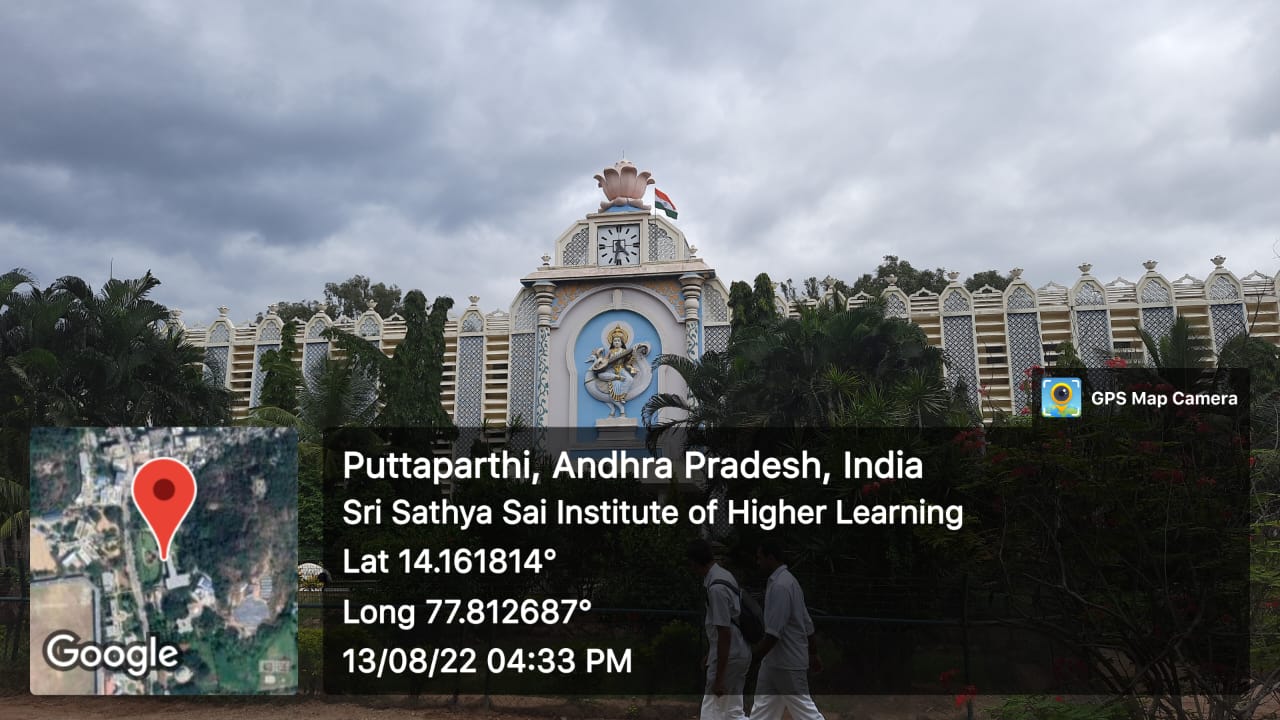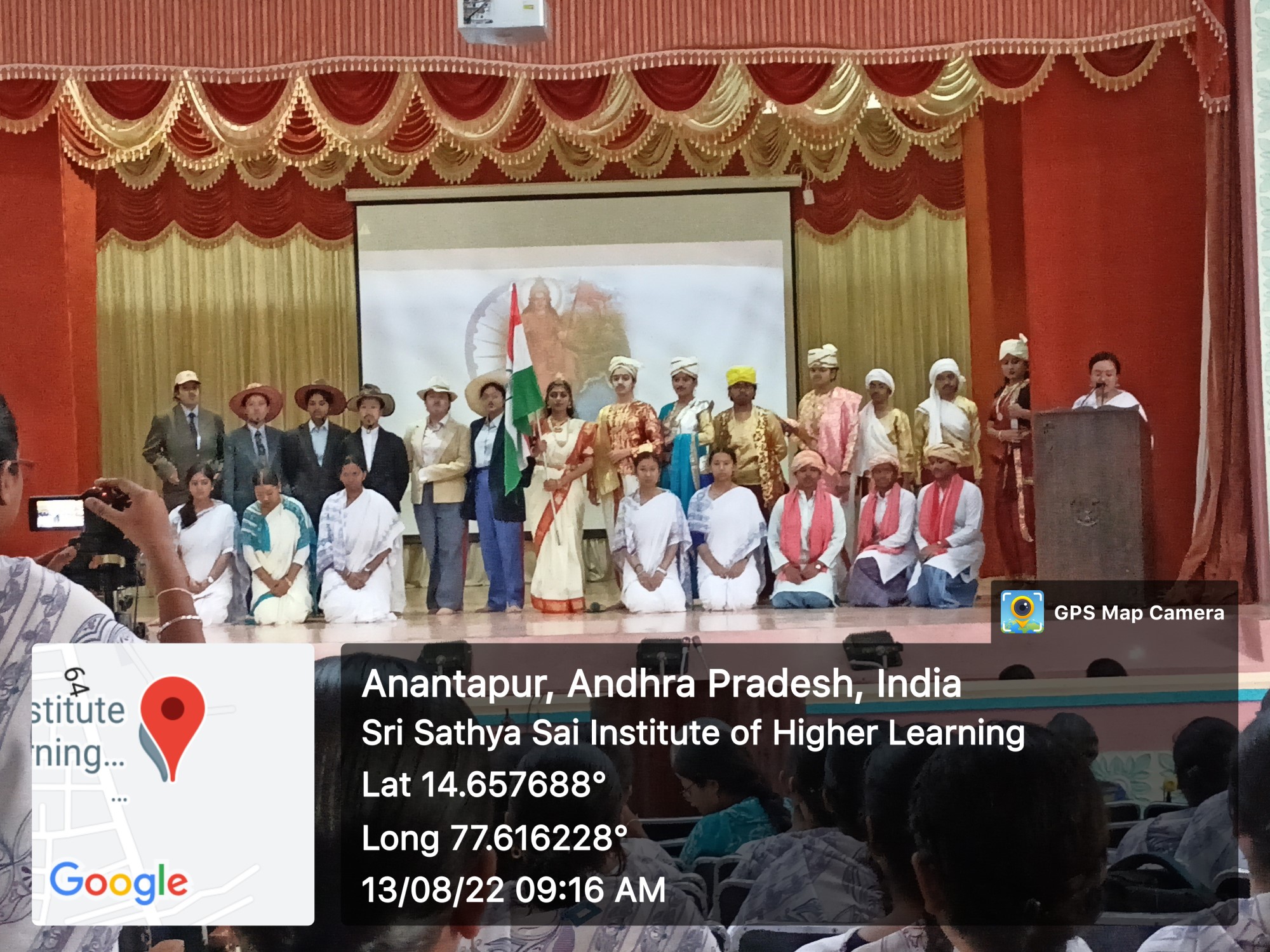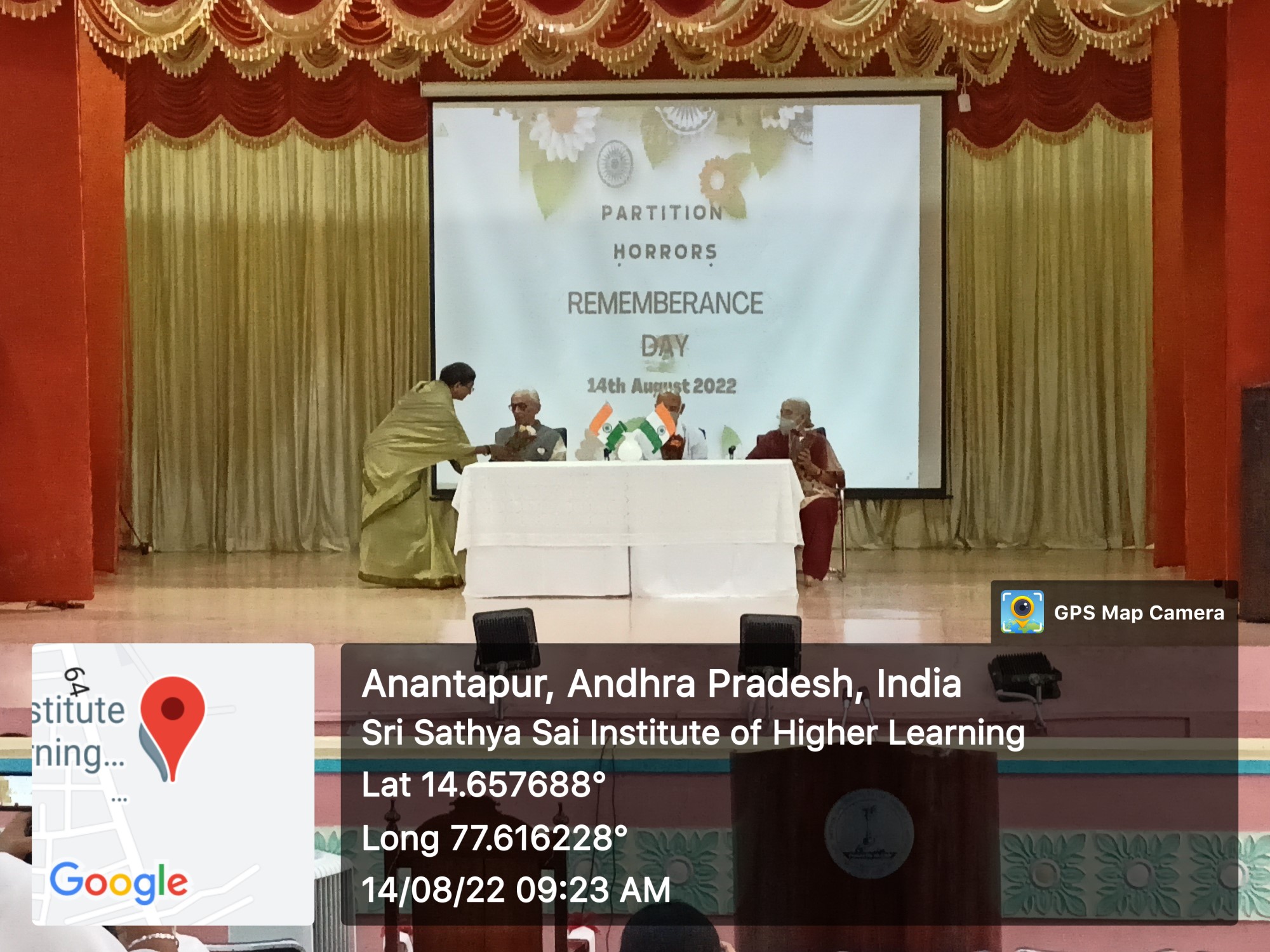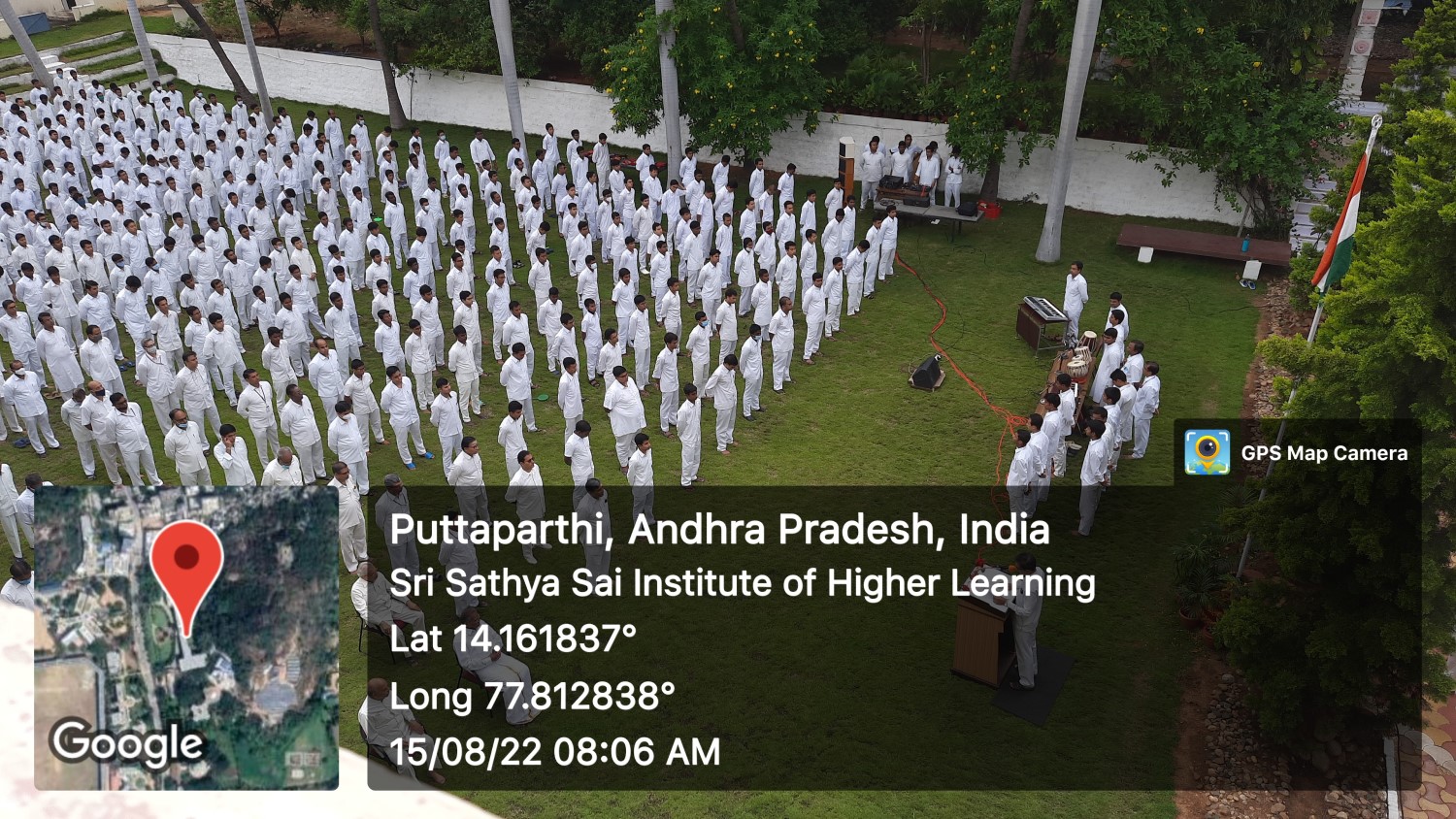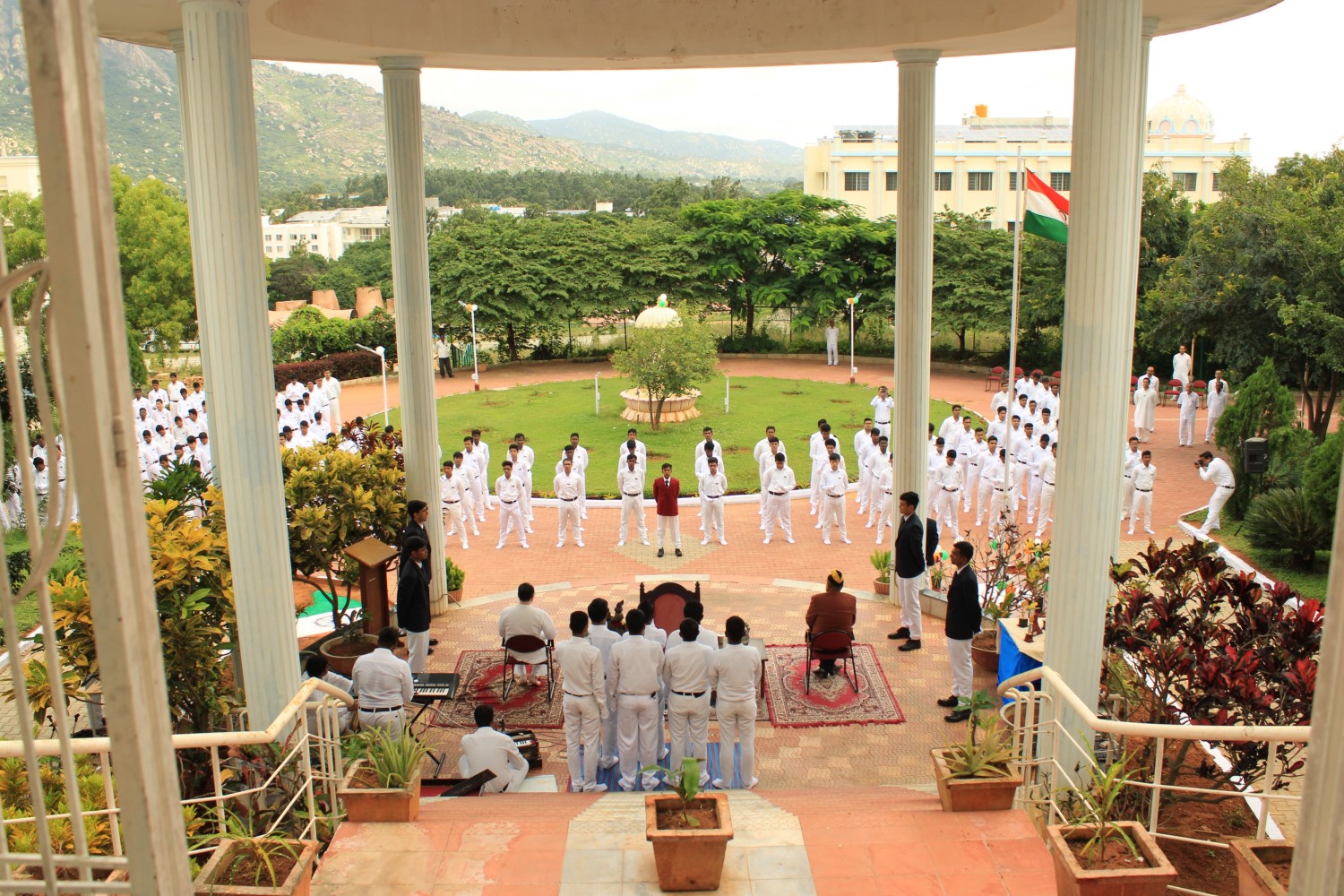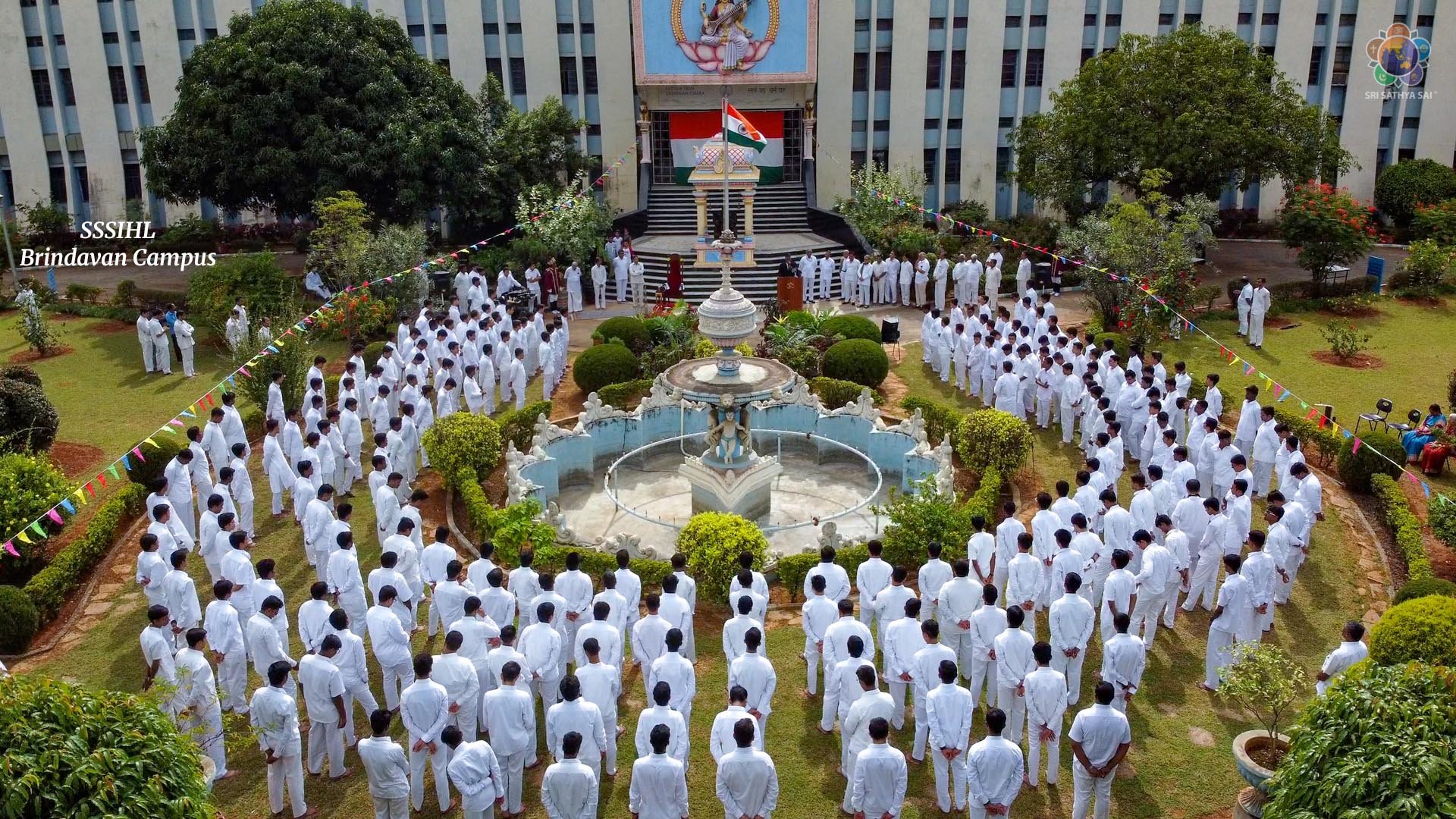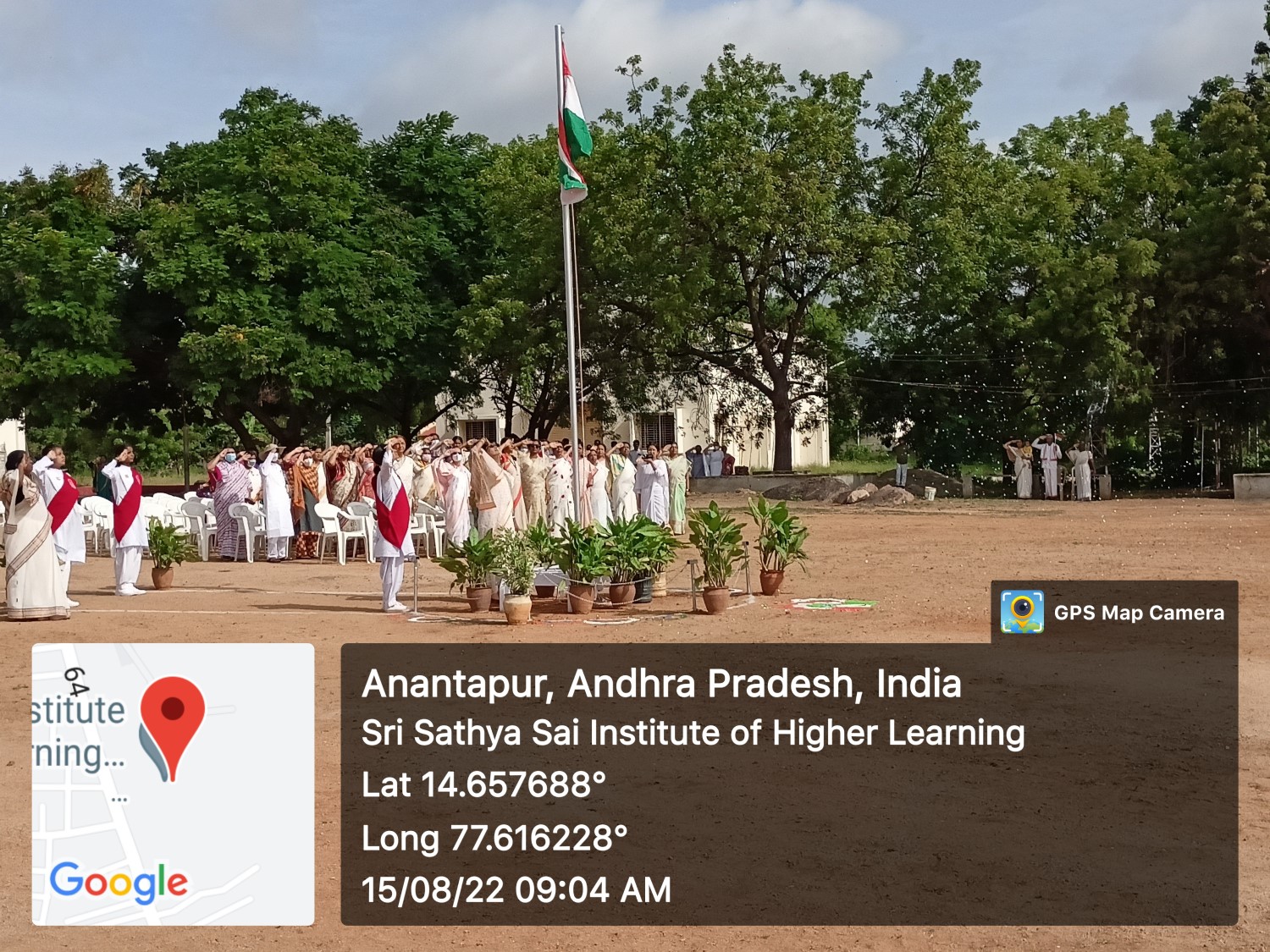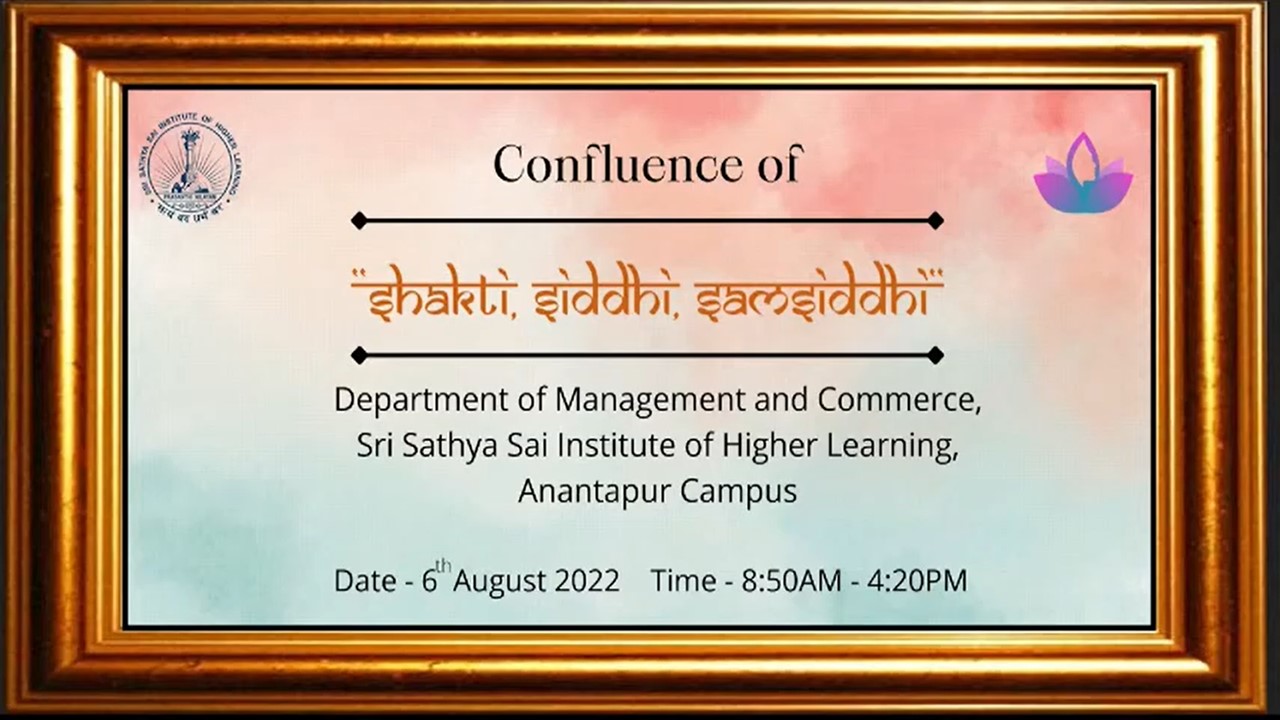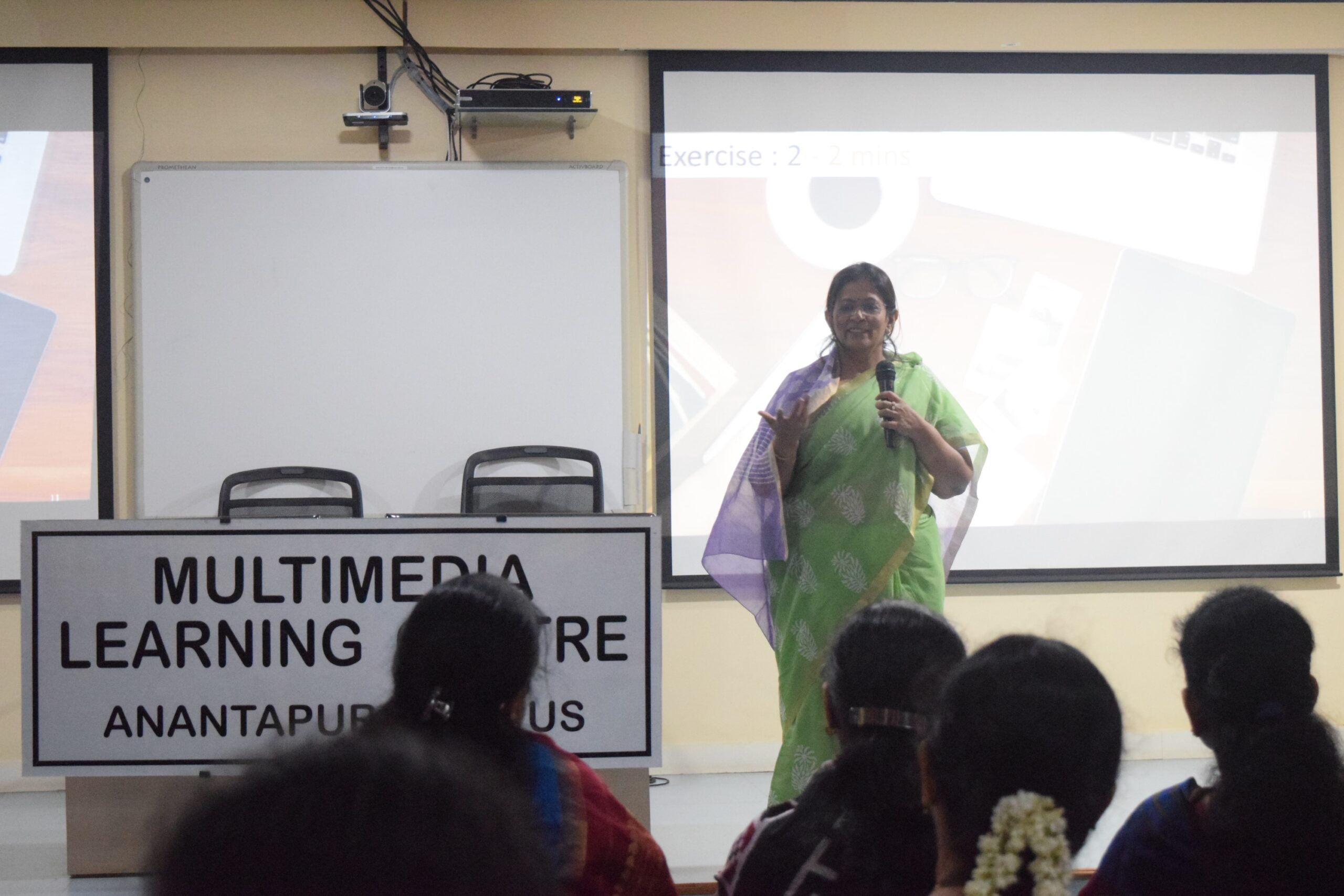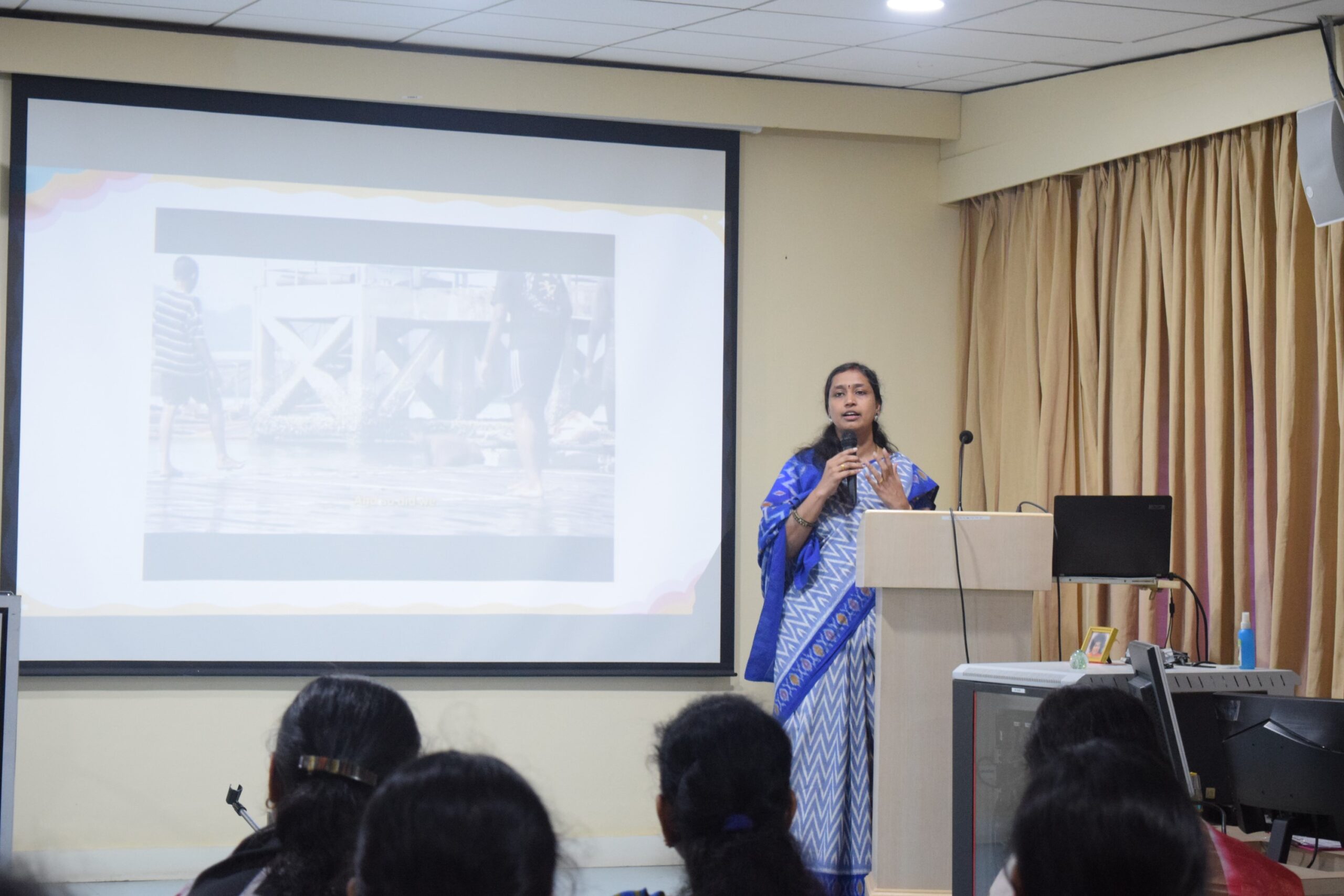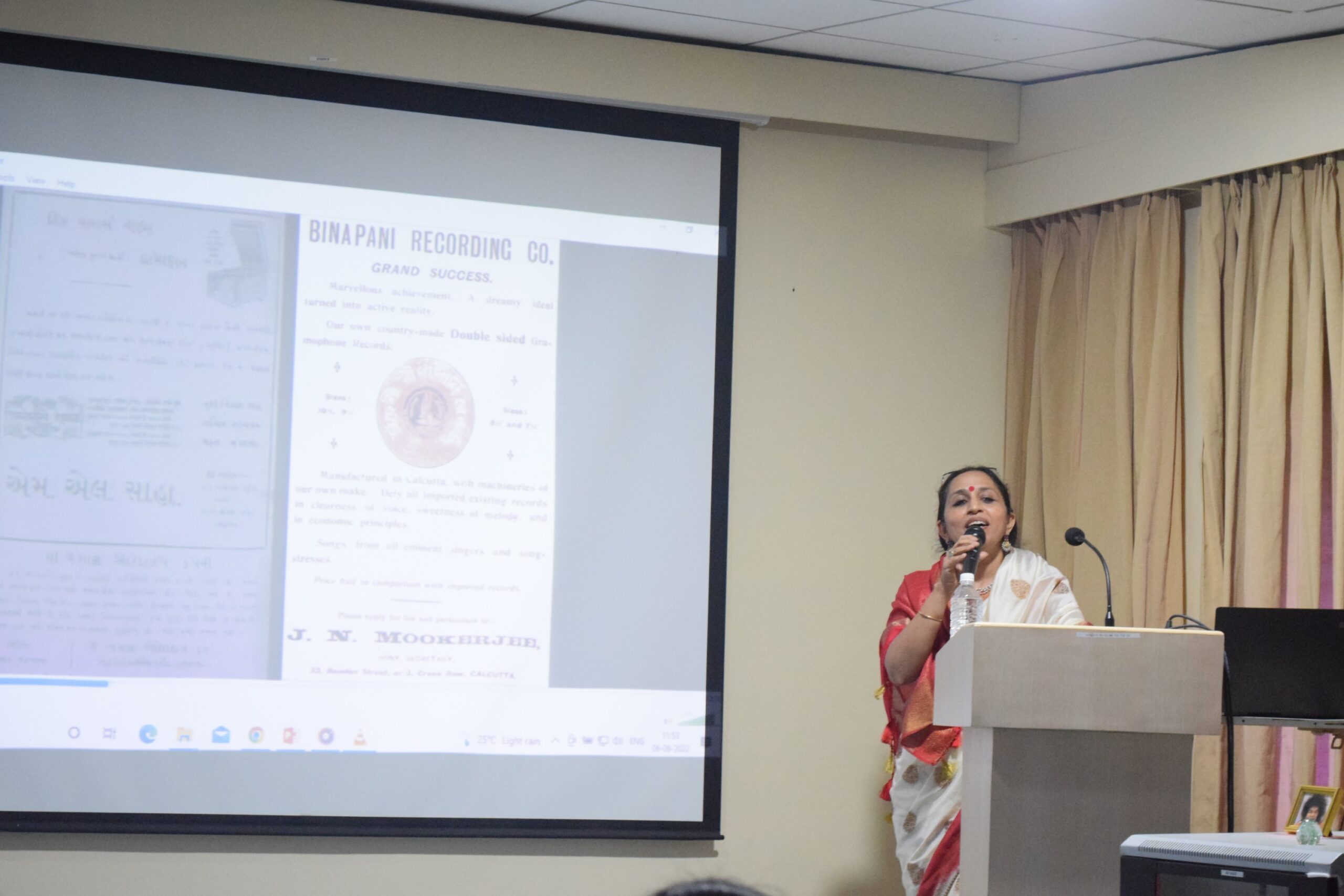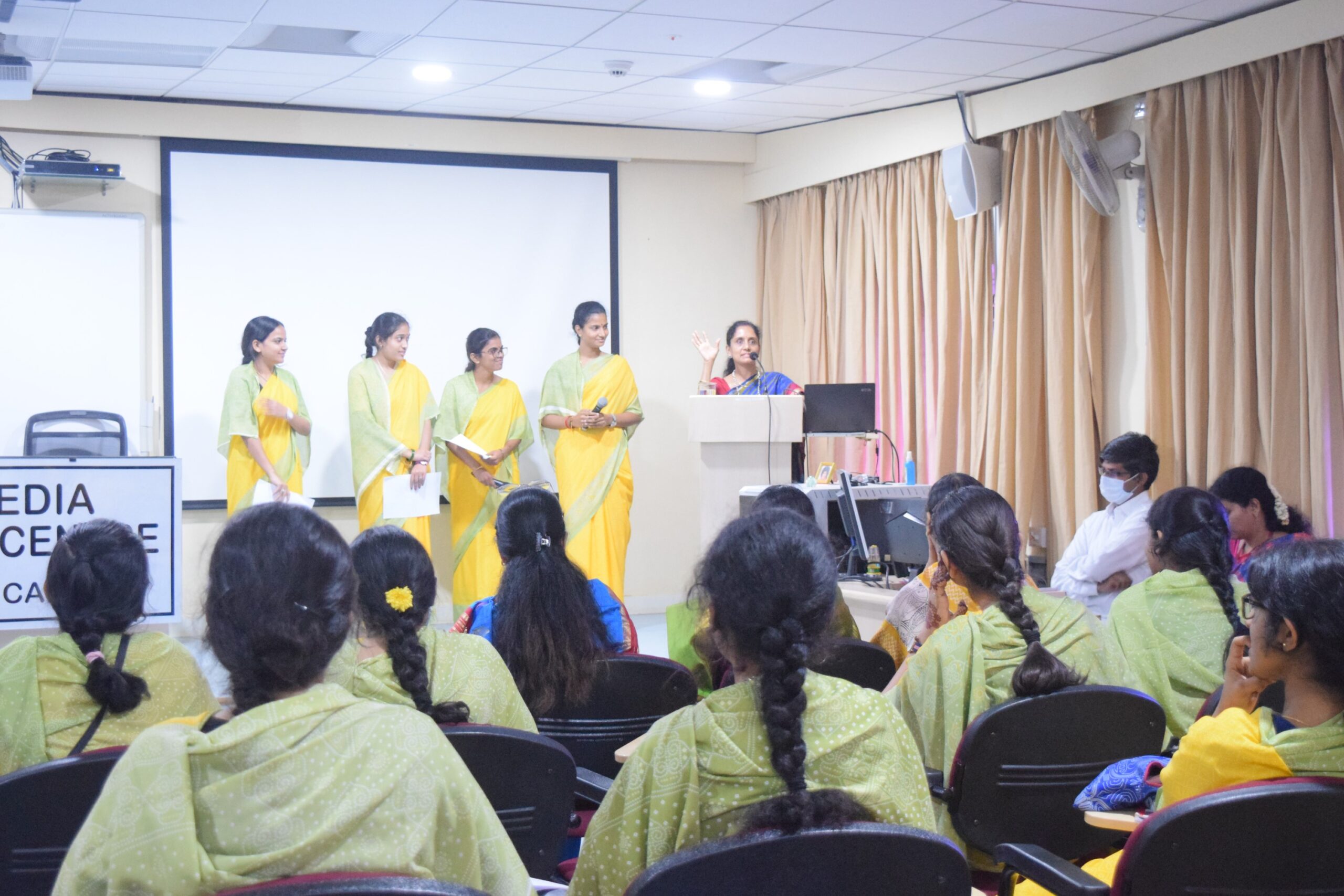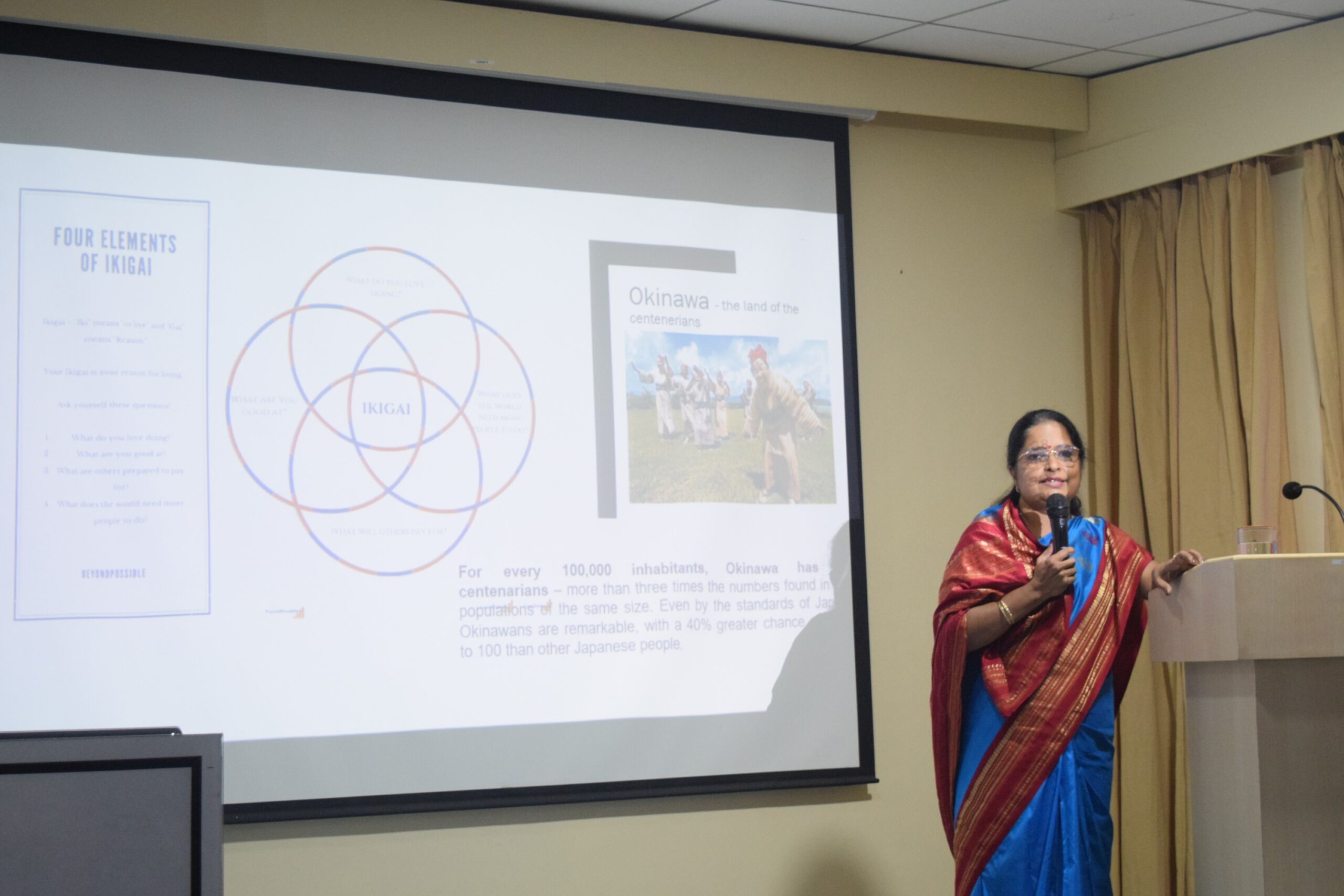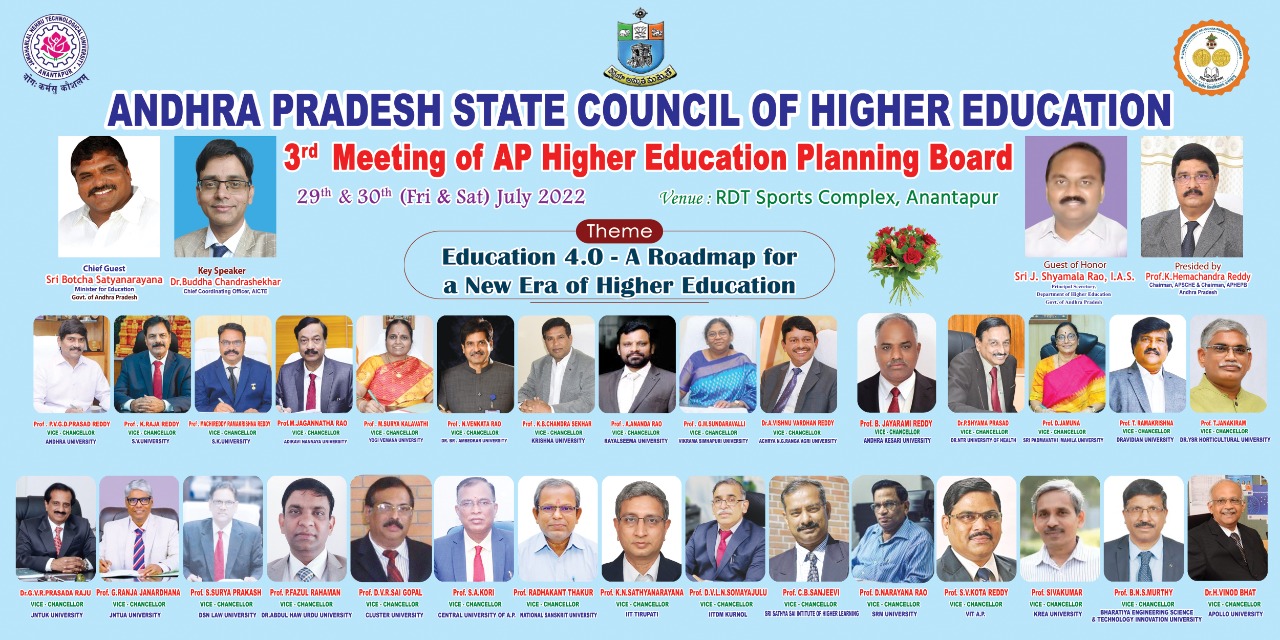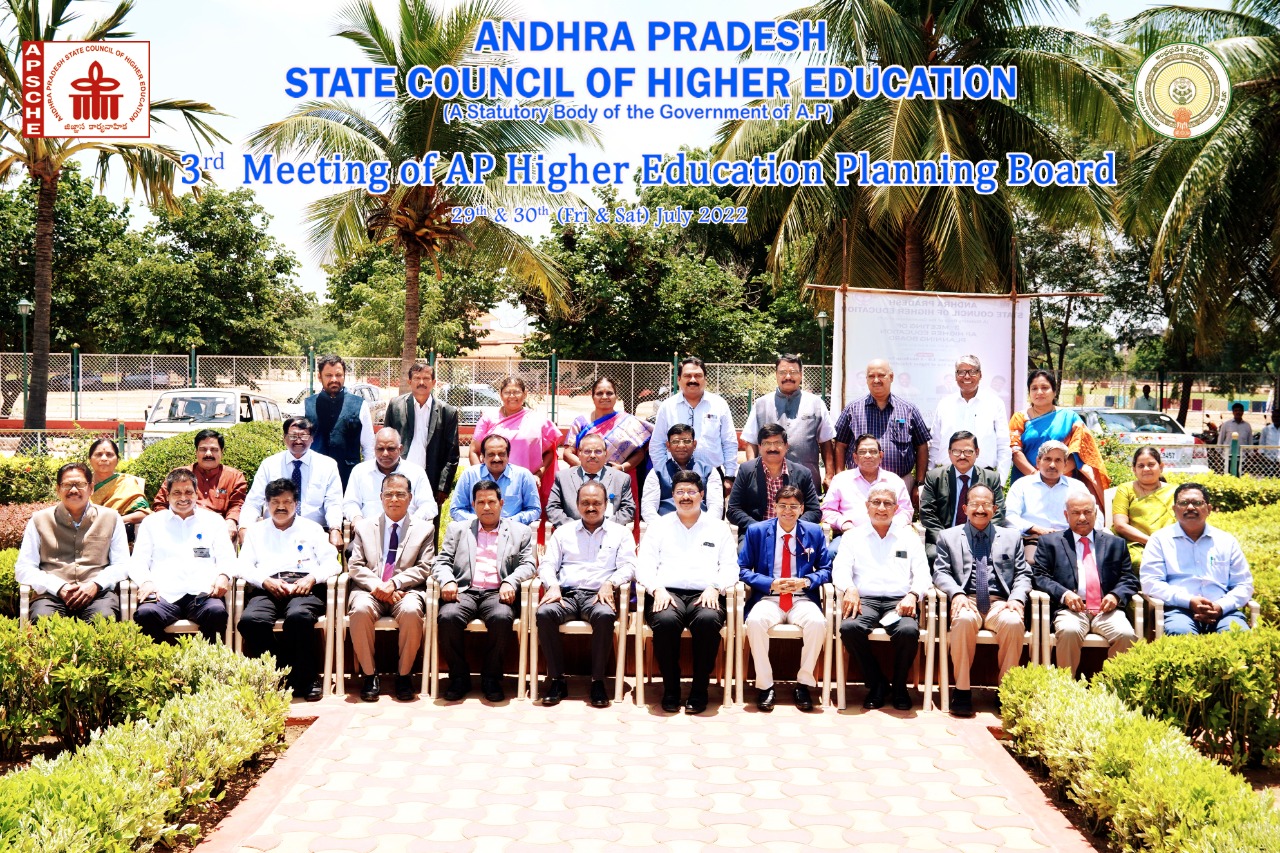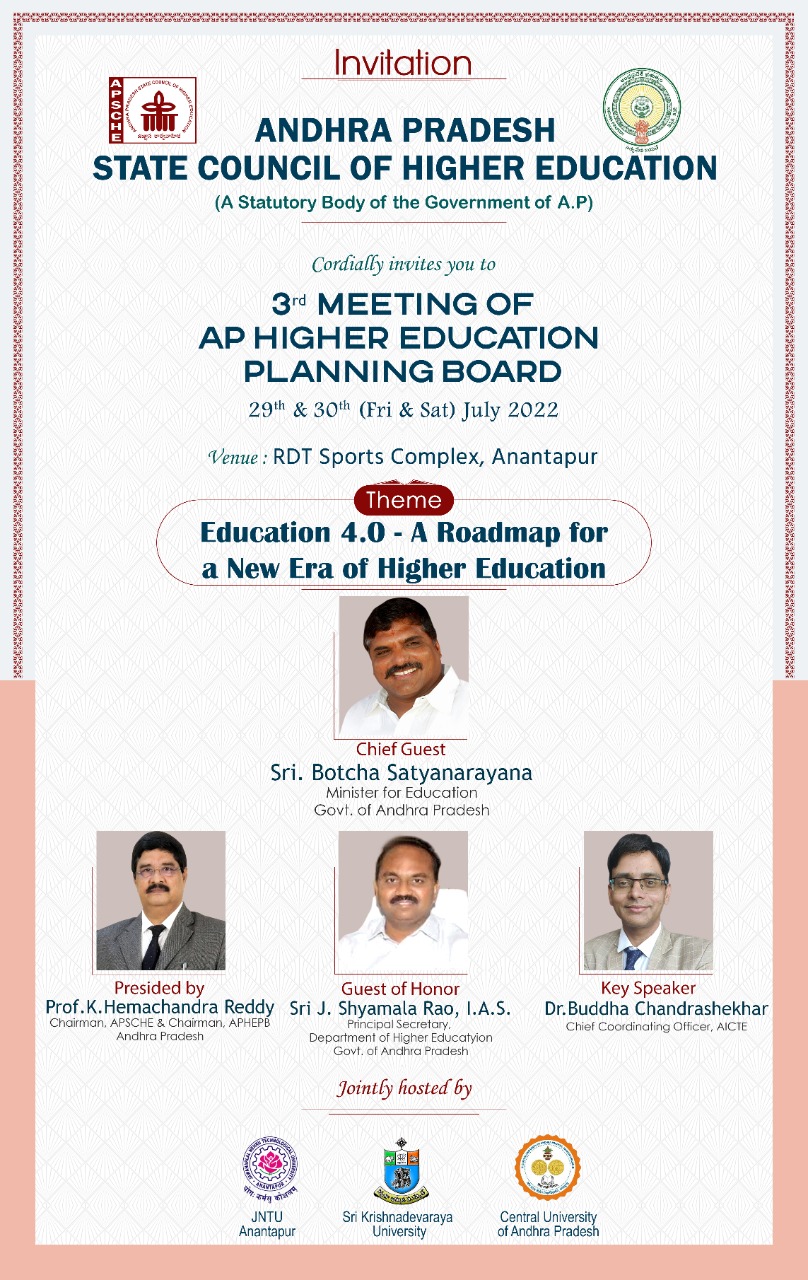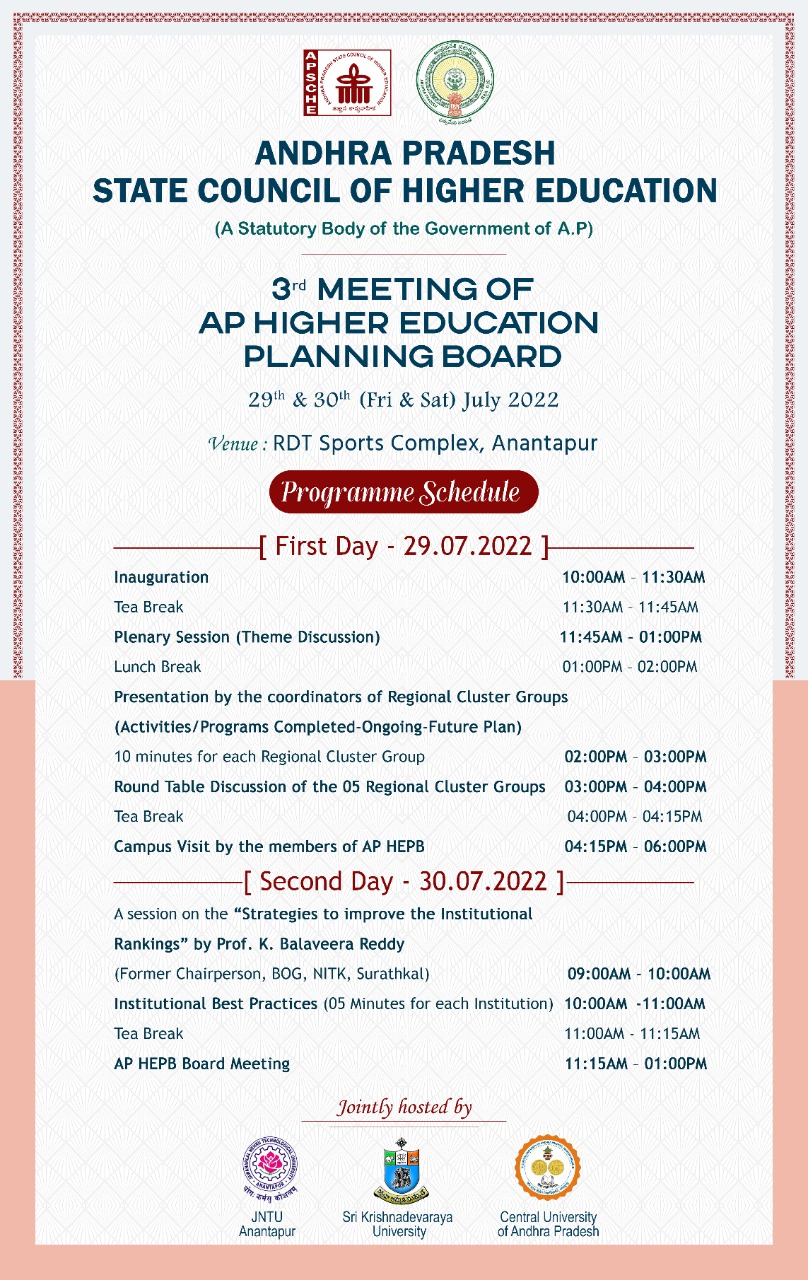Prasanthi Nilayam, 05 October 2022:
The inaugural ceremony of the “World Space Week (WSW) 2022” celebrations took place at the Sri Sathya Sai International Centre for Sports, Prasanthi Nilayam, Puttaparthi, Sri Sathya Sai District, Andhra Pradesh. The theme for this year’s celebrations worldwide is ‘Space and Sustainability’.
Sri Sathya Sai Institute of Higher Learning (SSSIHL) in association with Satish Dhawan Space Centre SHAR, Sriharikota, ISRO, Department of Space, Government of India, is celebrating the “World Space Week 2022” from 5th-7th October 2022.
The Governor of Andhra Pradesh His Excellency Shri Biswabhushan Harichandan was the Chief Guest and the event was presided over by Shri A Rajarajan, Distinguished Scientist & Director, SDSC SHAR, ISRO.
The dignitaries on the stage included, Shri R J Rathnakar Managing Trustee, Sri Sathya Sai Central Trust (SSSCT), the Chancellor, SSSIHL, Shri K Chakravarthi, Vice-Chancellor, SSSIHL, Prof. (Dr.) C B Sanjeevi, Shri R Senthil Kumar, Dy. Director, MSA, SDSC SHAR, Shri C Muralidhar, Chairman, WSW, Puttaparthi, District Collector Shri P Basanth Kumar, I.A.S, Member of Parliament Shri Gorantla Madhav, and Shri D Sreedhar Reddy, MLA, Puttaparthi.
The event began with the National anthem, followed by invocatory chants by the students of Sri Sathya Sai Institute of Higher Learning and the traditional lighting of the lamp by the Governor and other dignitaries on the stage.
This was followed by a short felicitation ceremony. On behalf of SDSC SHAR, ISRO Shri A Rajarajan, Director, SDSC SHAR felicitated the Chief Guest the Governor H.E. Shri Biswabhushan Harichandan, and other dignitaries on the stage. Shri R J Rathnakar Managing Trustee, SSSCT and the Vice-chancellor, SSSIHL, Prof. (Dr.) C B Sanjeevi felicitated the Governor H.E. Shri Biswabhushan Harichandan, Shri A Rajarajan, Director, SDSC SHAR, and all other dignitaries on the stage on behalf of SSSIHL.
Shri C Muralidhar, Chairman, WSW, Puttaparthi, delivered the welcome address during which he outlined the importance of making space cleaner and using it more responsibly which he said was the thought behind this year’s global theme “Space and Sustainability”. As part of this year’s celebrations, he also shared that SDSC SHAR has conducted several competitions to reach out to the student community across the Sri Sathya Sai District which includes, Space talent test, essay writing, painting, quiz, and drawing, which has received an overwhelming response.
The 2022 World Space Week teaser video was then released by the Hon’ble Governor which gave the audience an understanding of the theme ‘Space and Sustainability’ and the gamut of activities SDSC SHAR is conducting through the World Space Week Celebration programs organised in 7 locations Cuttack, Karaikal, Chennai, Vellore, Vizianagaram, Guntur, and Puttaparthi, other than Sriharikota.
This was followed by an address by Shri R Senthil Kumar, Dy. Director, MSA, SDSC SHAR who stated that the objective of the event will be met if it can inspire at least ten students toward space science and technology.
The Vice-Chancellor, SSSIHL, Prof. (Dr.) C B Sanjeevi in his address said the event was a great opportunity for SSSIHL and its Students. He was highly positive about a collaboration soon to support the SSSIHL team in the building of a satellite that he hoped will be called ‘Sai Satellite’.
Shri R J Rathnakar, Managing Trustee, SSSCT in his address expressed his gratitude to the team of SDSC SHAR, ISRO for partnering with SSSIHL and holding the celebration in Prasanthi Nilayam and said it is a proud moment for SSSIHL fraternity to be associated with India’s most prestigious institution. He then spoke about the ‘Special Consultative Status’ conferred upon the Sri Sathya Sai Central Trust by The United Nations (ECOSOC) for its unparalleled humanitarian work. He said it was important to educate people about how society benefits from space science and technology and thanked the Scientists at ISRO for their amazing work and for making India proud. Shri Rathnakar also thanked the Hon’ble Governor for taking the time to grace the occasion.
Shri A Rajarajan, Director, SDSC, in his address said that from the days of the first sounding rockets from Thumba to the GSLV, the Indian Space Programmes has come a very long way and the credit goes to Dr. Vikram Sarabhai for the vision he had and the strong foundation he laid and to Prof Satish Dhawan for making Sarabhai’s vision a reality. He said that in the 1970s when scientists around the globe were focused on proving their might in space, Sarabhai was working on using space applications to carry information to remote places that can benefit the common man, a technology commonly known today as DTH. He went on to share the various areas of benefits that satellites provide to humanity. Shri A Rajarajan saluted SSSIHL’s holistic approach to education and for producing model citizens and said he was proud of this association. He went on to share that one of his colleagues is an SSSIHL Alumnus and doing the organization proud.
The Chief Guest, Governor of Andhra Pradesh H.E. Shri Biswabhushan Harichandan then addressed the students. The history of India’s prestigious institution ISRO he said, is an interesting and inspirational story for Indians. He said Dr. Vikram Sarabhai is considered the founding father of the Indian Space Programme and Prof Satish Dhawan is known as the architect who converted the dreams and vision of Sarabhai into reality.
He then spoke about the importance of sustainability in space and said the orbital area around the earth is a finite resource and its use will define its sustainability in the long run. In today’s context, he said conservation will need to be slightly redefined as a state of harmony between man, land, and space, quoting the noted American author, philosopher, and scientist Aldo Leopold. He emphasised the need to clean up space debris to ensure there is no threat to future missions. He said India’s space debris monitoring project NETRA is a domestic surveillance system that will support all sustainability initiatives of ISRO by providing the required data. He spoke on the increasing role of the private sector, especially start-ups, and said they should be encouraged with a set of sustainability guidelines to ensure optimum utilization of resources that will improve the productivity of space missions.
The inaugural ceremony concluded with the National Anthem and Aarathi to Bhagawan Sri Sathya Sai Baba.
The Governor then visited the exhibition and spent some time viewing the various exhibits showcased by the SDSC SHAR team. Students and the general public during the next 3-days will have an opportunity to view the outstanding work done by SDSC SHAR through their exhibits which will include posters from their projects, scaled-down versions of their launches, ISRO launch videos, and prize-winning competition posters of young student participants. Students from over 150 educational institutions in and around the Sri Sathya Sai District are expected to participate in the celebrations.
The students and staff of Sri Sathya Sai Higher Secondary School, Primary School, Smt. Easwaramma High School and all the four campuses of Sri Sathya Sai Institute of Higher Learning, senior members of the SSSIHL administration along with other members of the Sri Sathya Sai Central Trust (SSSCT) were present at the event.
As a prelude to the celebrations, the students held a Space Walk (Walkathon) on 4 October 2022, through the town of Puttaparthi to create awareness about space science and our space programs with society. The space walk was flagged off by Sri Rahul Dev Singh, IPS, Superintendent of Police, Sri Sathya Sai District. View Recording.
World Space Week is an international celebration of Space Science and Technology and their contribution to the betterment of human conditions. Every year, 4 -10 October is celebrated by more than 70 nations as World Space Week in commemoration of the launch of the first man-made Earth Satellite, Sputnik-I on 4th October 1957, and the signing of the treaty on principles governing the activities of states in the exploration and peaceful uses of outer space including the moon and other celestial bodies by a resolution in the UNO on 10th October 1967.
The inaugural event was streamed live on YouTube: https://youtu.be/3VvcpblVSmw


